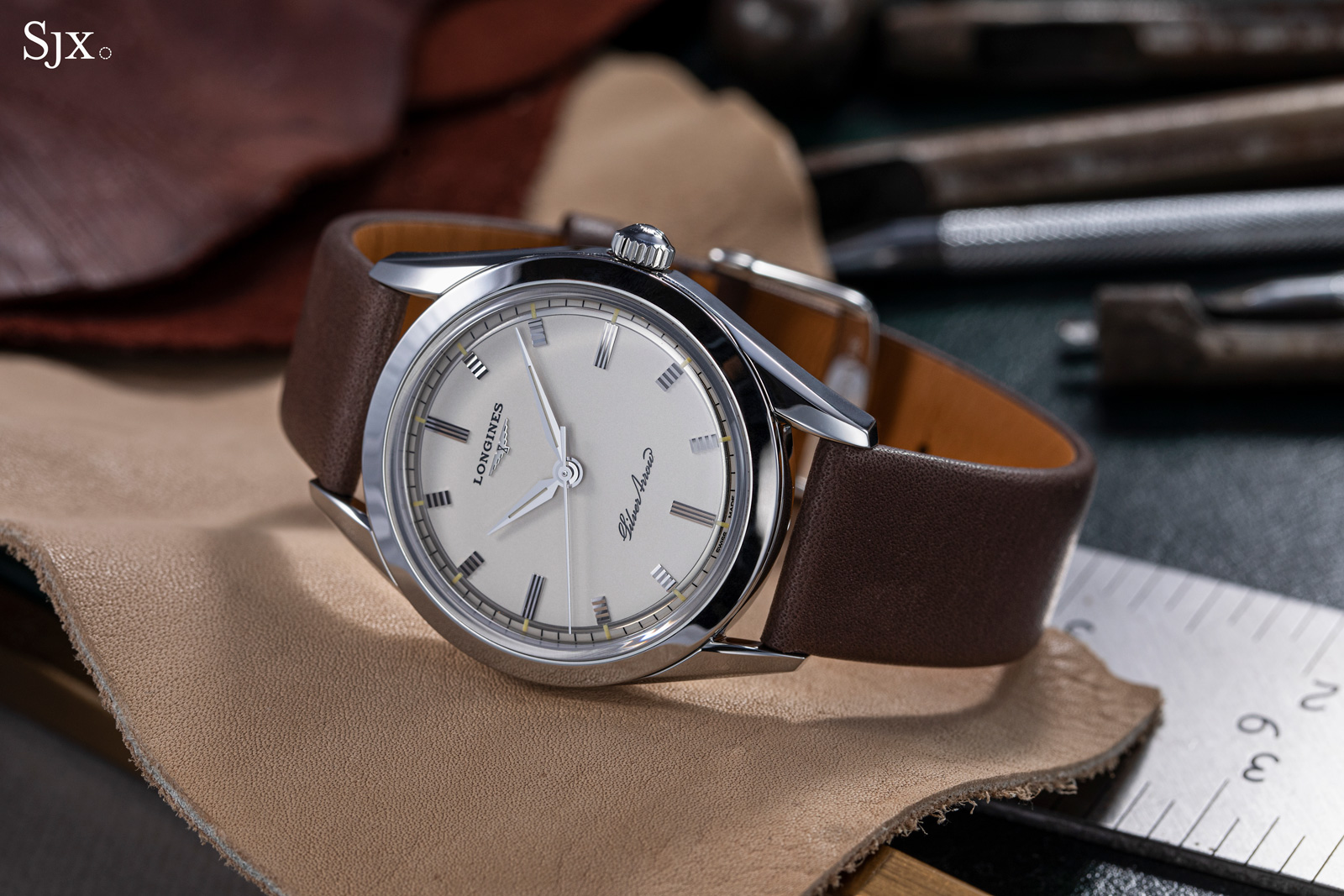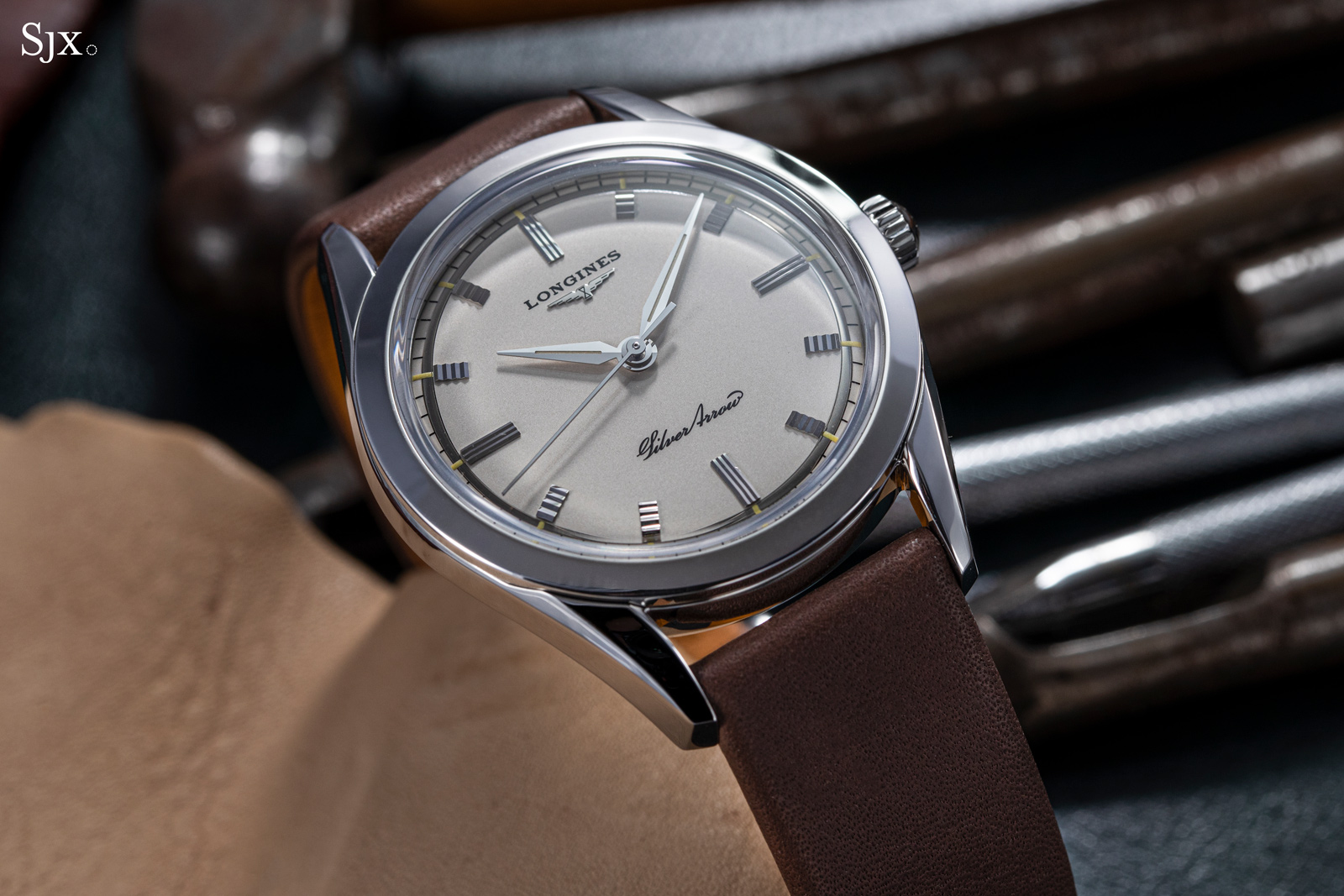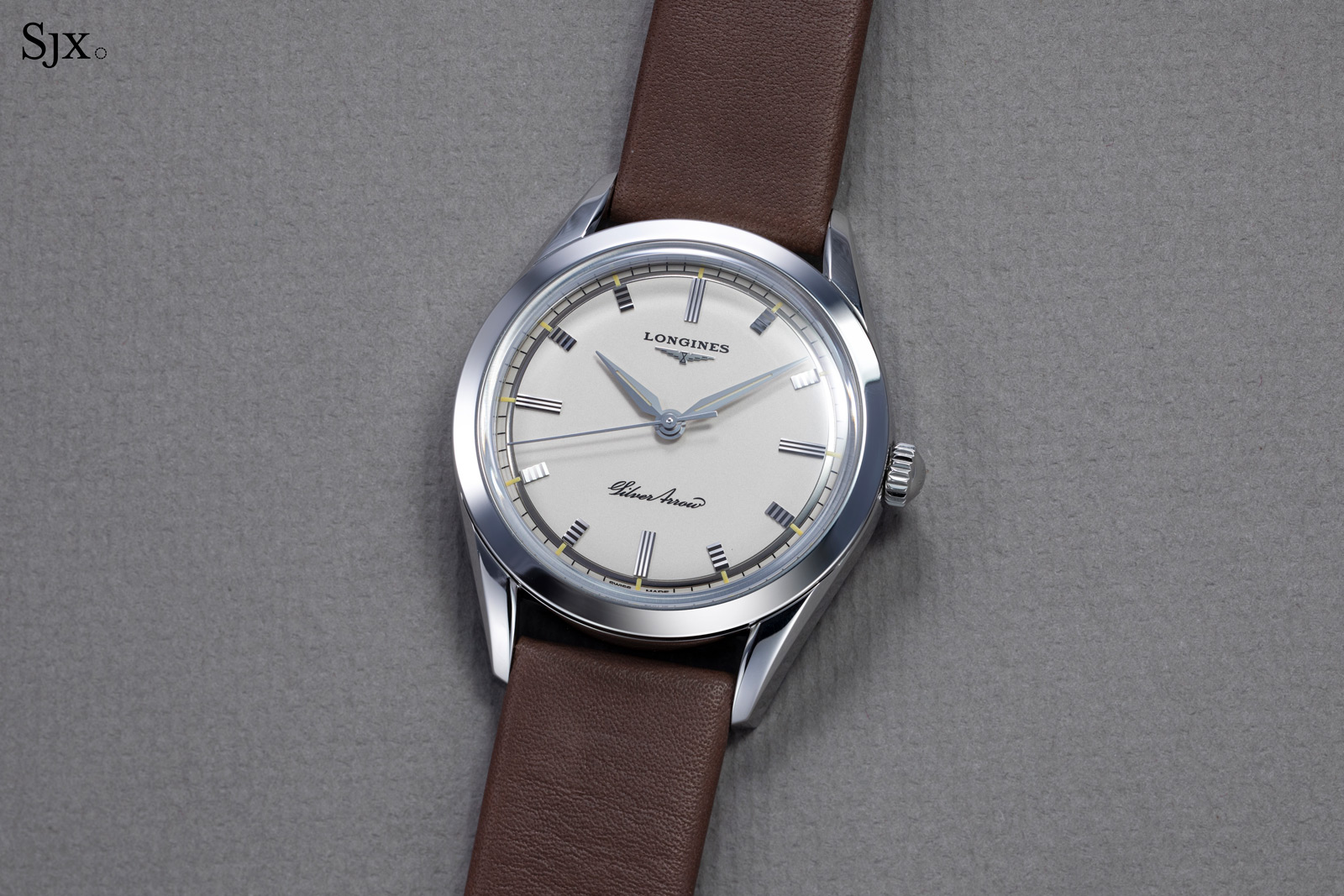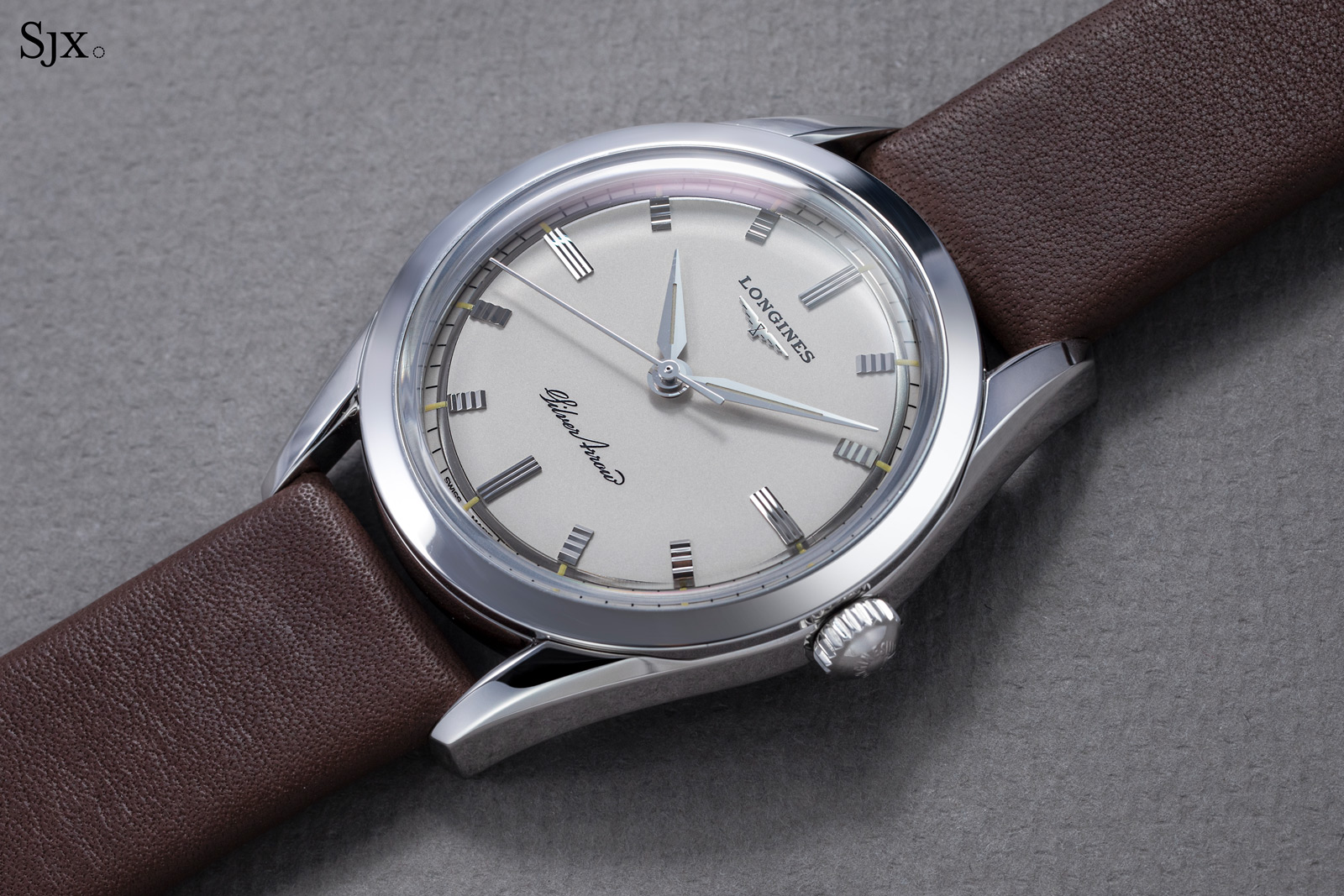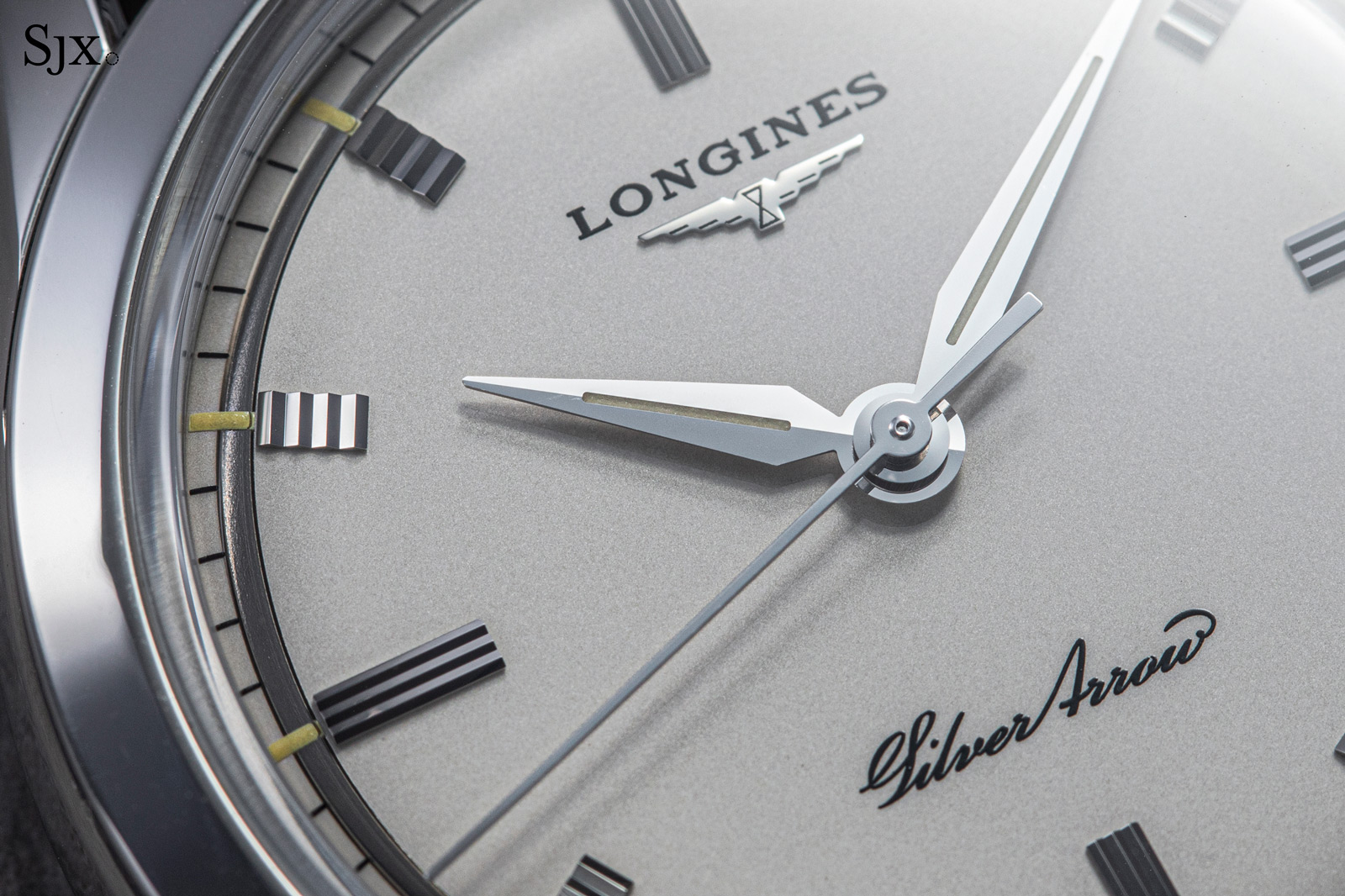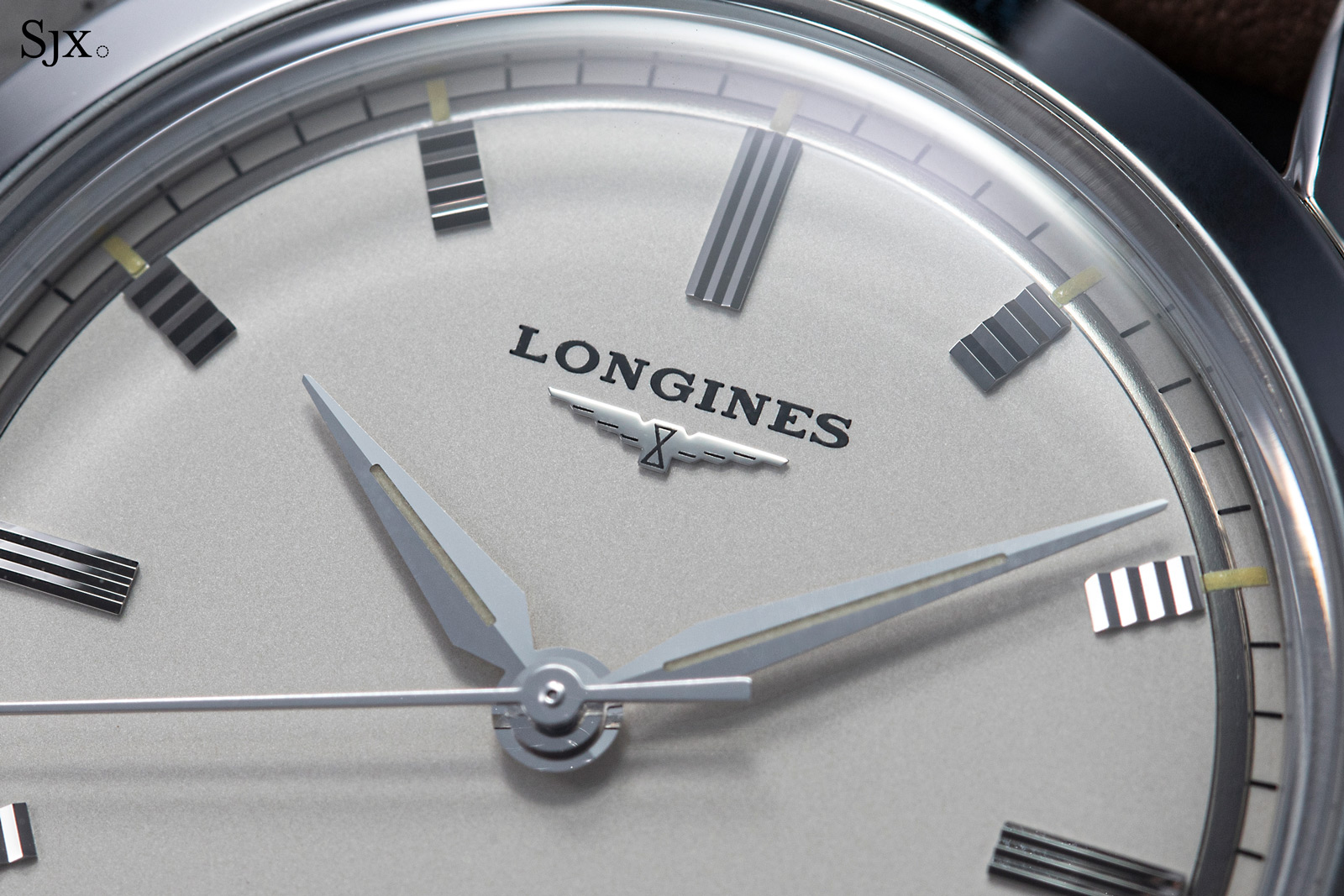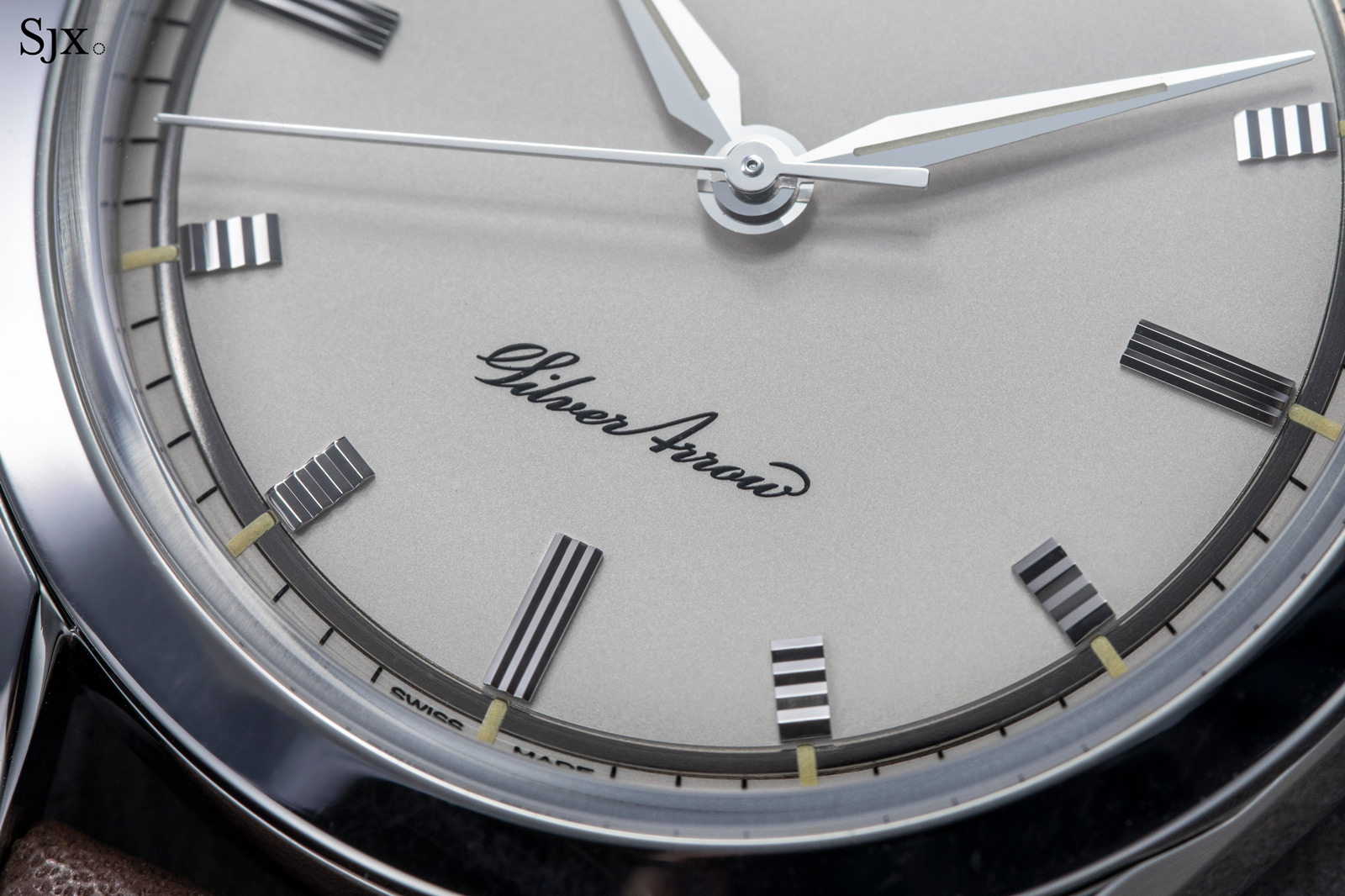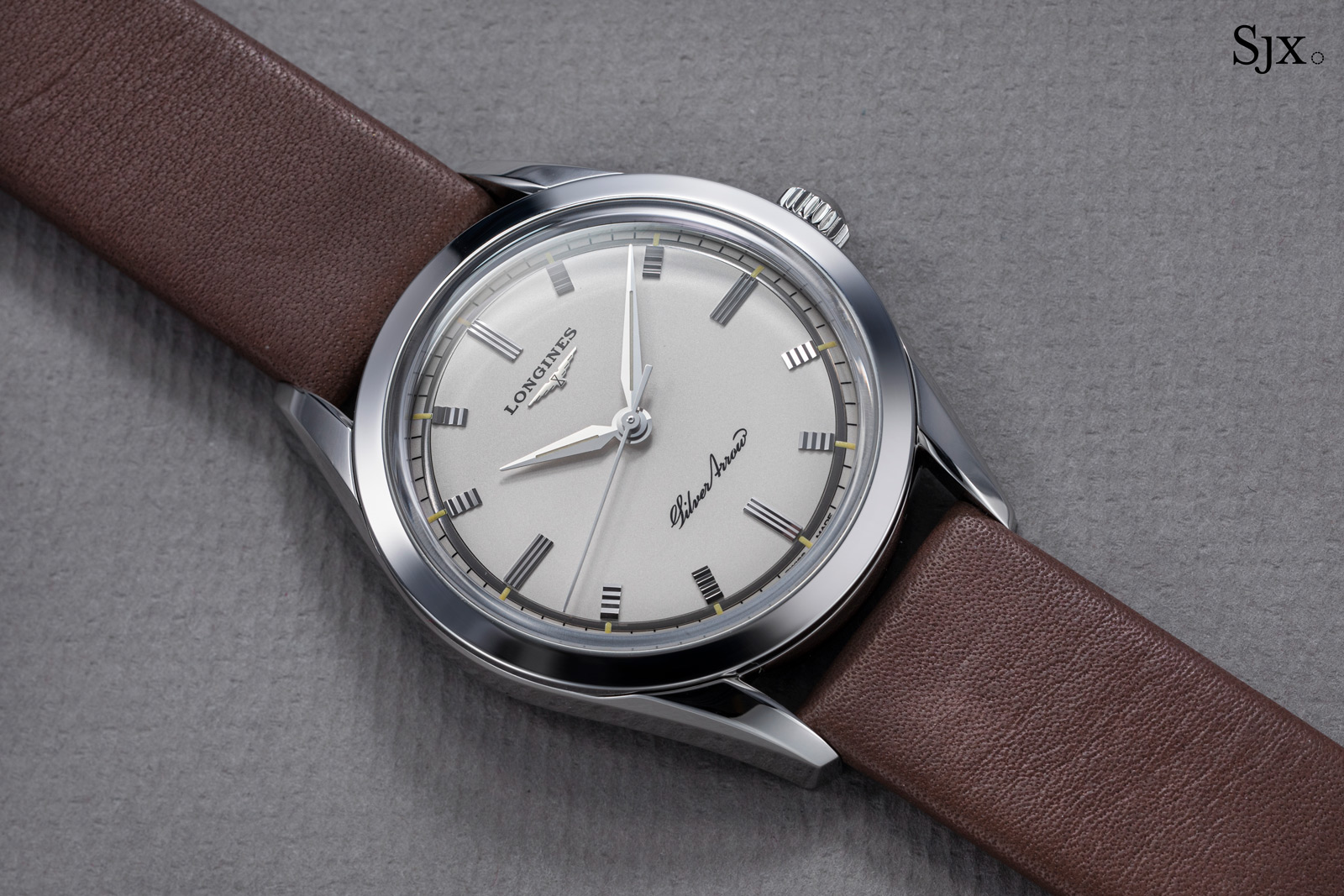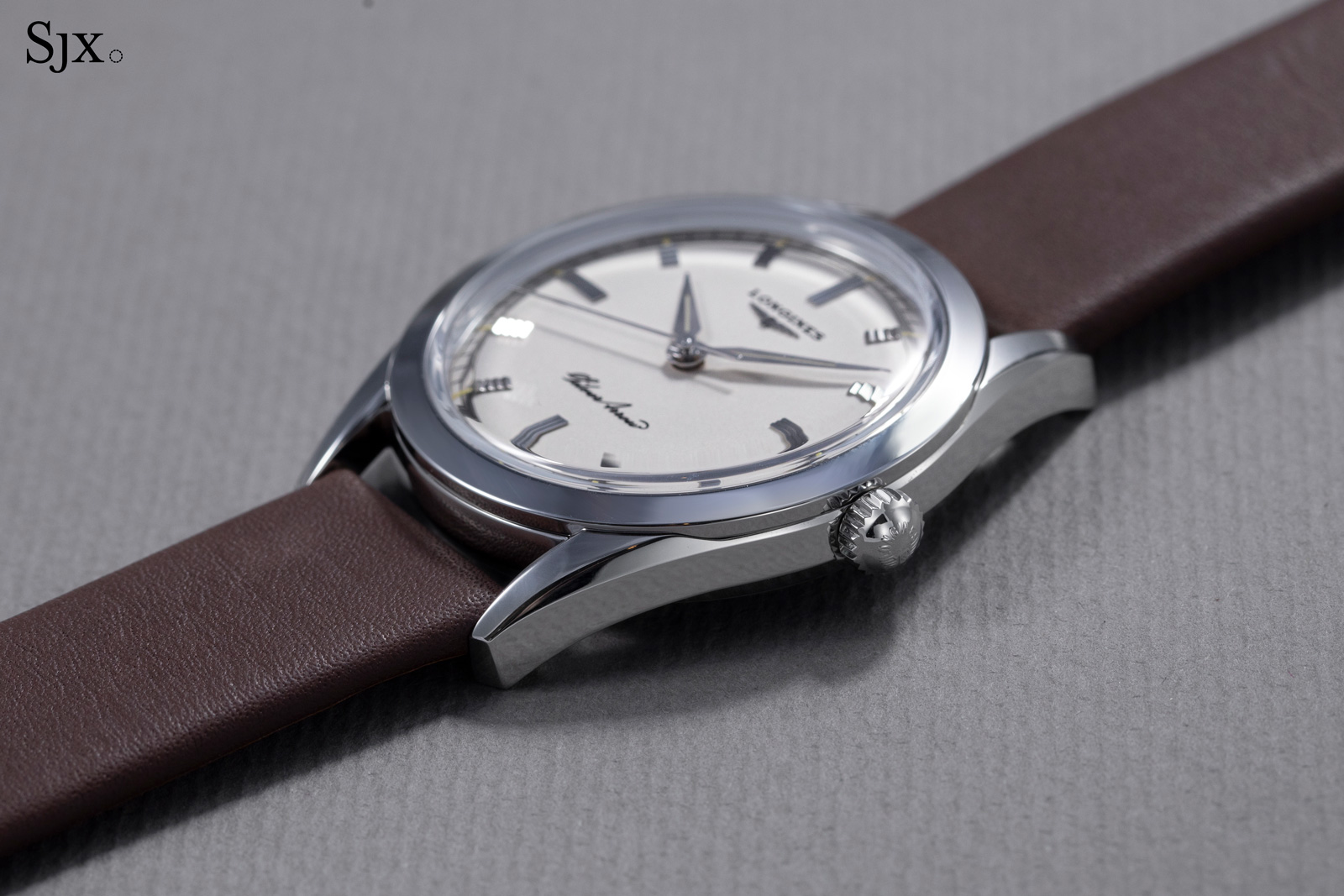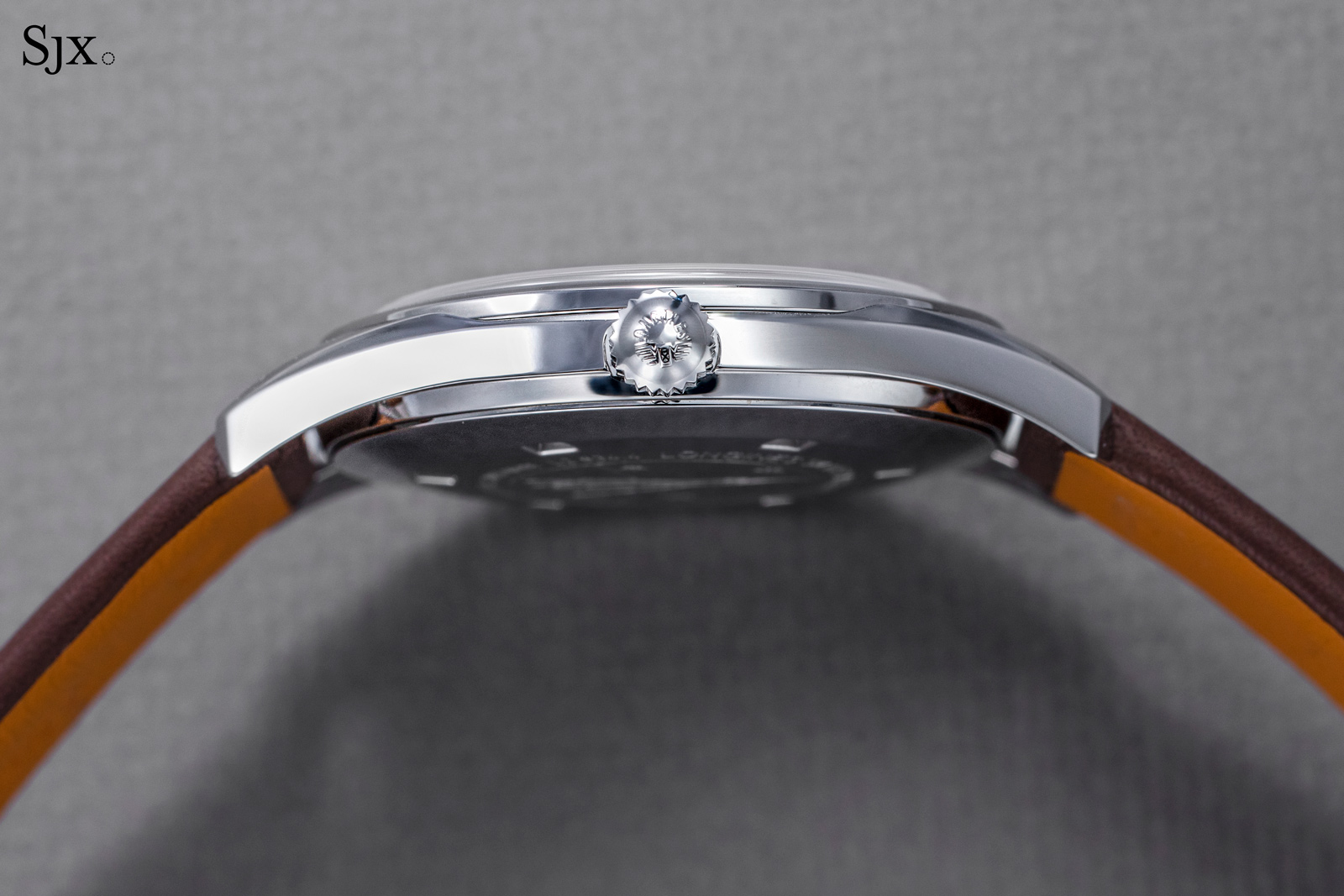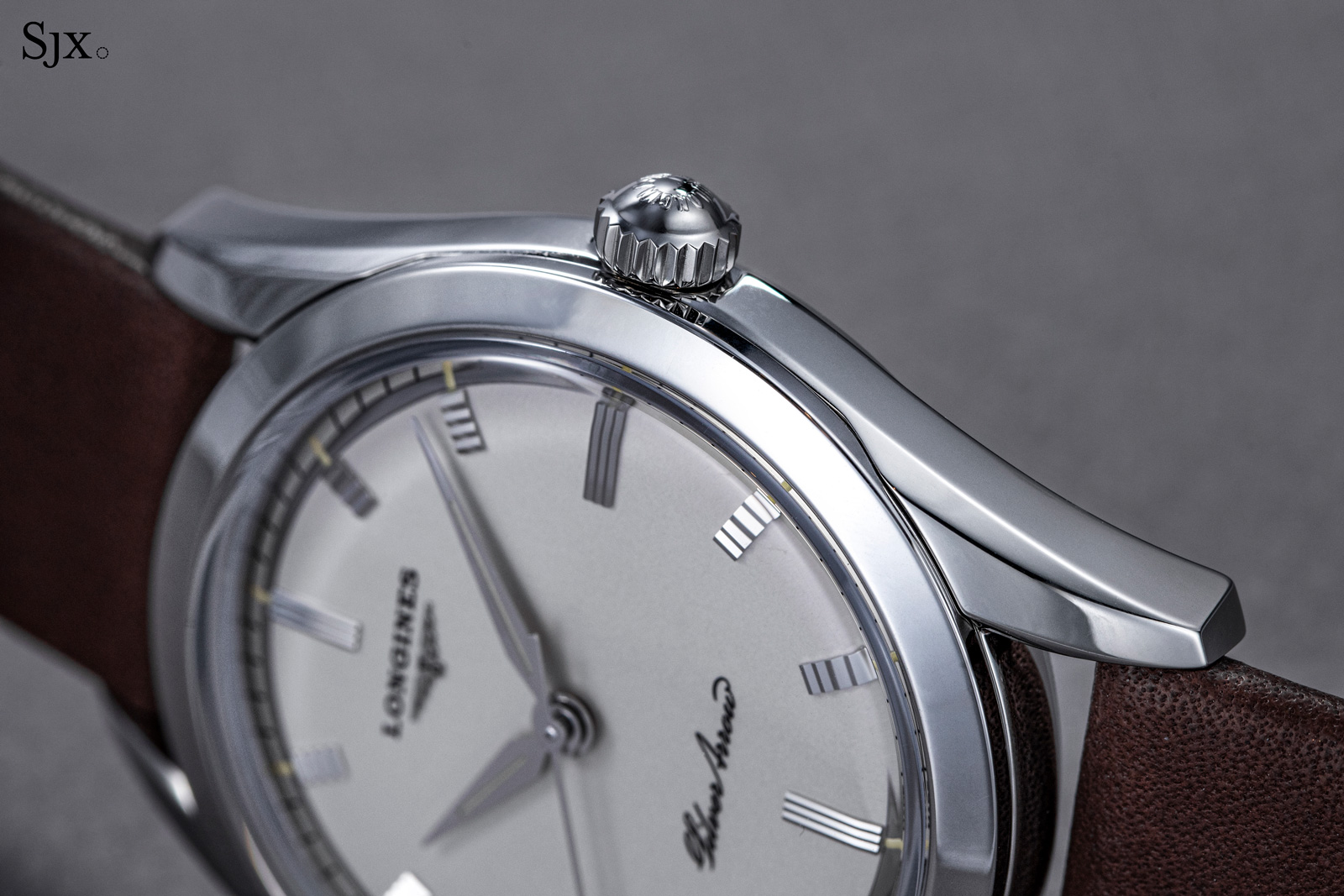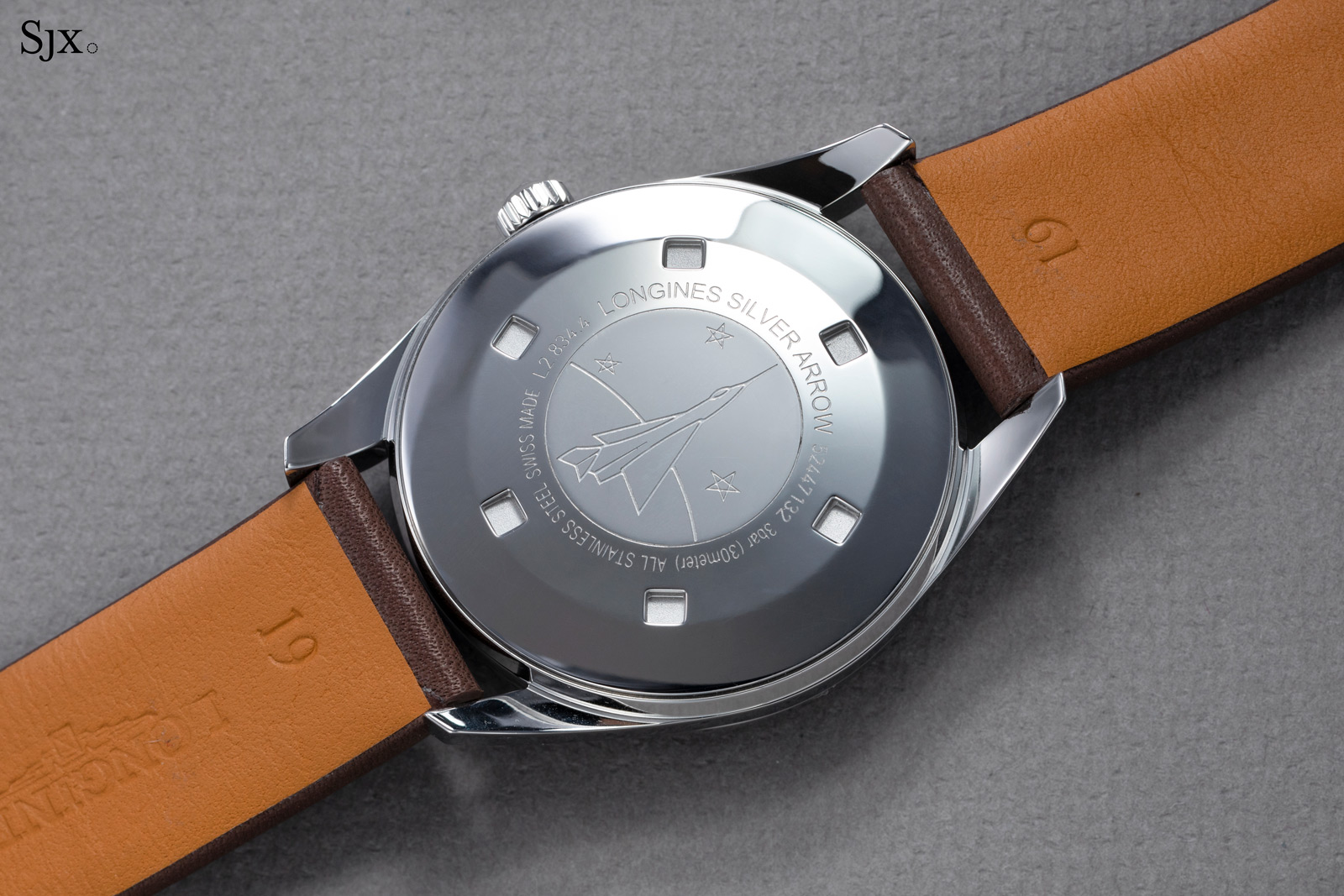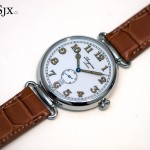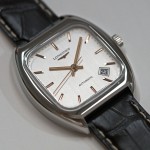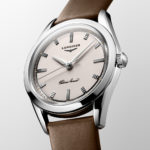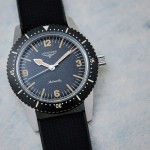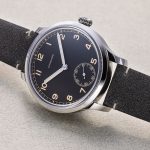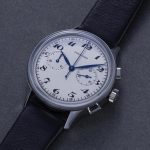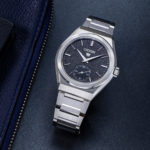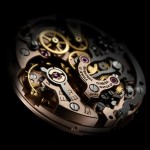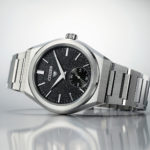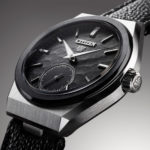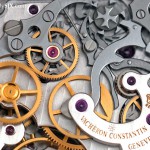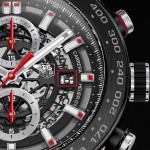Having explored the Citizen Caliber 0200 last week, we now focus on arguably the most important aspect of the watch – the cal 0200 within. An important achievement for Citizen, the cal. 0200 is the brand’s first high-end automatic movement. The fact that the watch was named after its movement indicates its significance, and also the fact that the watch was constructed around the movement, rather than vice versa.
The Caliber 0200 wristwatch is high quality, particularly in the finishing of its case and bracelet. That’s all the more impressive given its US$6,000 price tag, which leaves the best of class in its price segment in terms of finishing and quality. But the Caliber 0200’s merits are all encompassing – its movement is as accomplished as the external components.
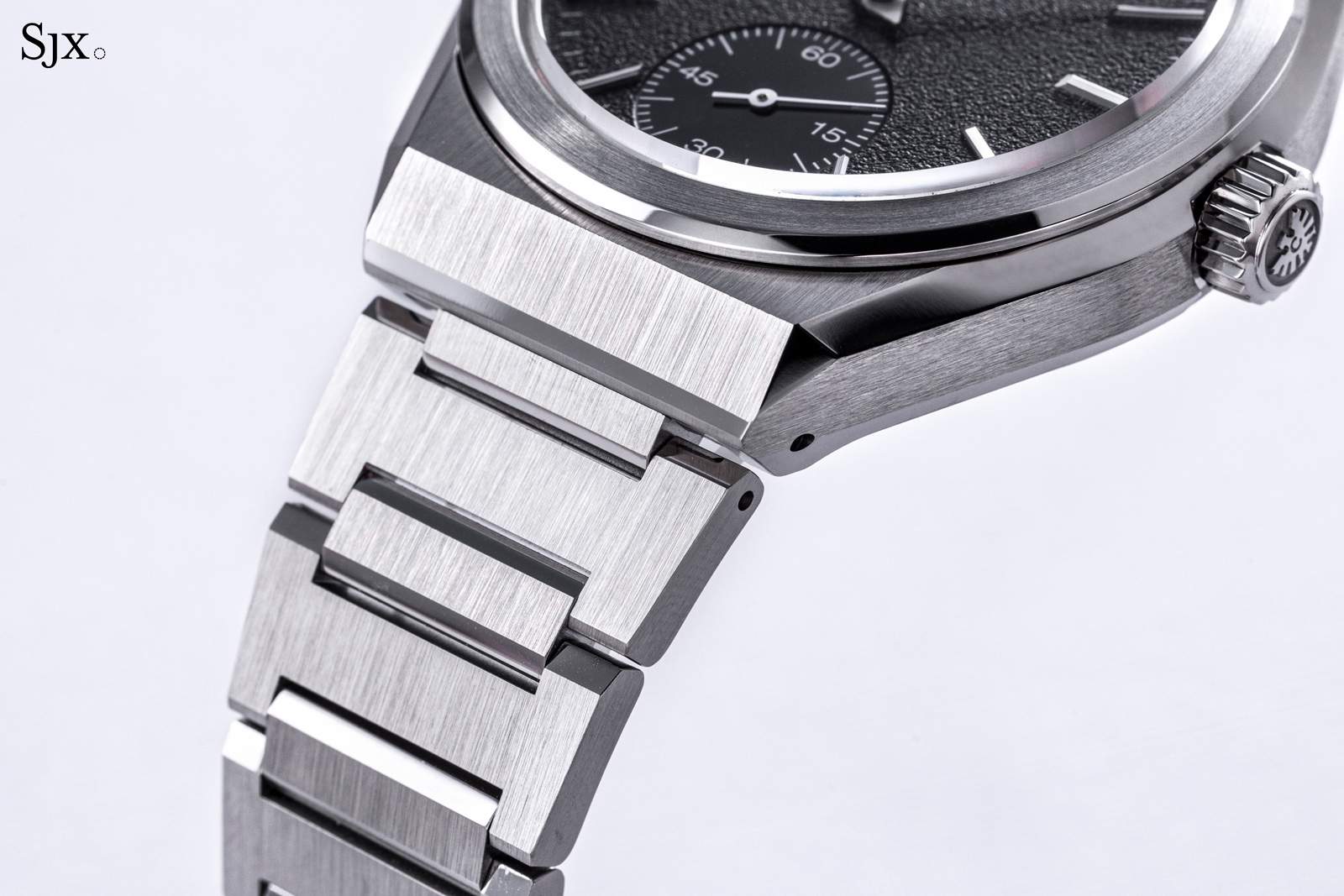
The cal. 0200 is an all-new, in-house automatic with with the features expected of a modern movement, and a little bit more. Beyond its intrinsic qualities, it is also notable for being a fusion of Japanese and Swiss watchmaking: its development, production, and assembly is done by Citizen in Japan, but with a key contribution from Swiss movement maker La Joux-Perret, which makes the base plate and bridges, and helped to refine the movement decoration.
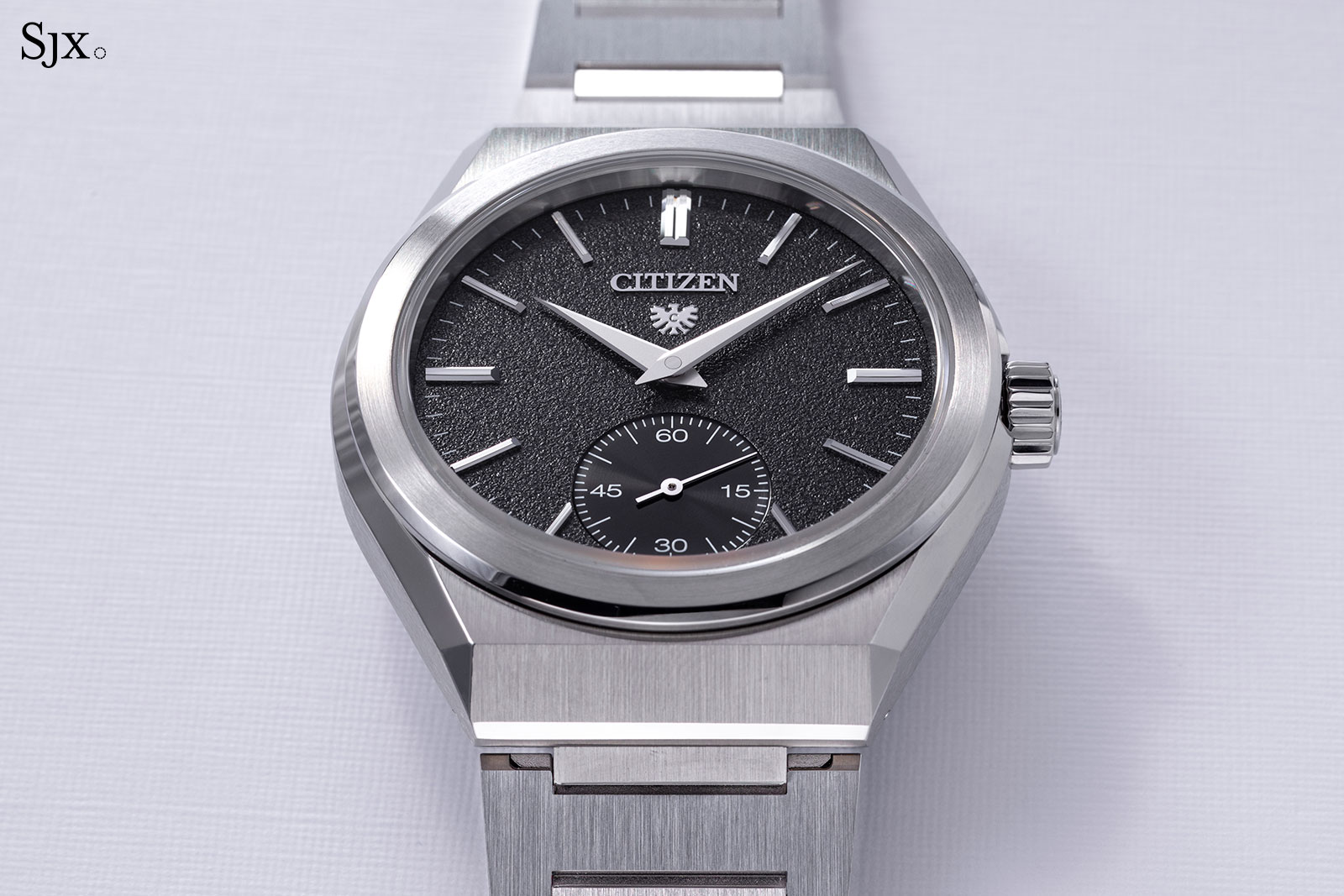
The rest of the movement – from development and construction to finishing and assembly – is done by Citizen at its headquarters in Tokyo. In fact, Citizen set up a specialised workshop, the Mechanical Watch Elements Development Department (or ME team for short) specifically for the cal. 0200.
The ME team led the development of the movement, and continues to oversee the production of its components as well as assembly. Comprised primarily of engineers, the ME Team also includes a “meister” watchmaker (“meister” is a title bestowed by the Japanese government to top craftsmen and artisans in many fields) from Citizen’s movement manufacturing division. For an insider’s understanding of the cal. 0200, we spoke with Kenji Tsuchiya, an engineer from the ME team over Zoom.
[Editor’s note: The watch pictured is a prototype, explaining some imperfections in the movement finish.]
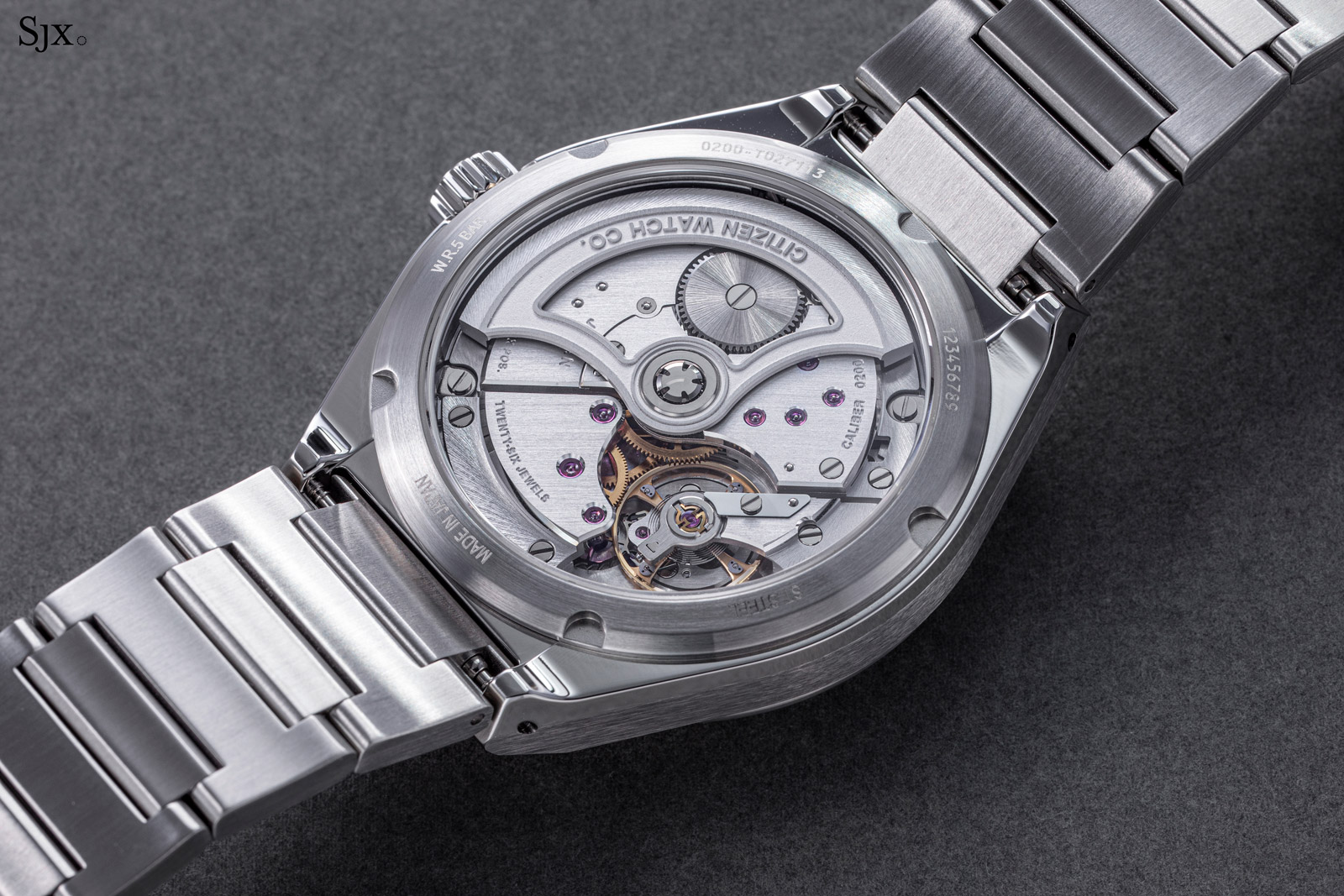
The foundation
In essence, the movement is as fuss-free as it can be – it has no central seconds, which means the gear train is as straightforward as possible. As in a traditional, manual-wind movement, the going train starts with the mainspring at 12 clock, and leads to the fourth wheel at six o’clock, which directly drives subsidiary seconds.
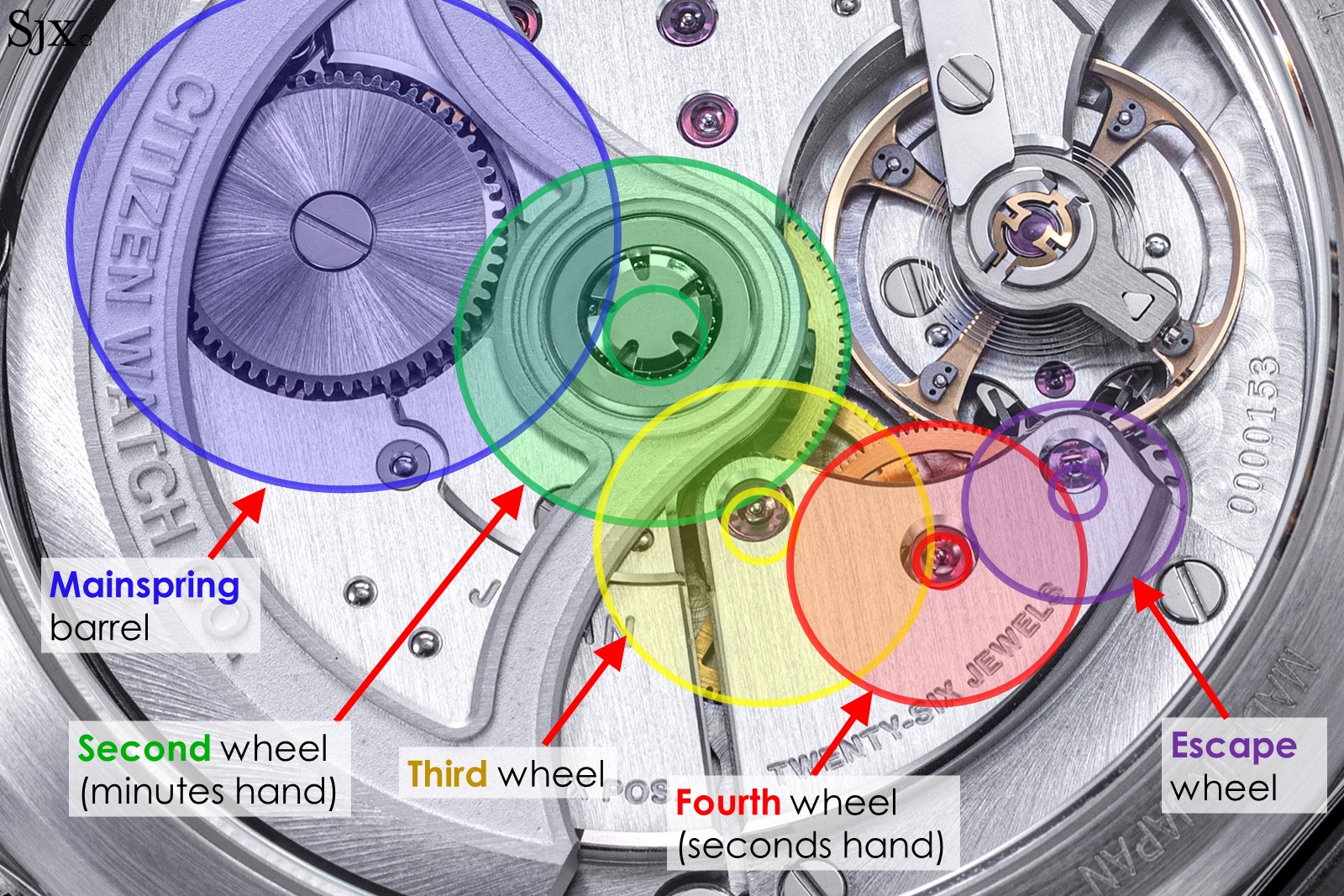
The layout of the cal. 0200 brings to mind a classical hand-wind movement with sub-seconds at six
The traditional layout of the gear train optimises the volume of the movement by spreading out the moving parts on the same plane. Almost three-quarters of the movement’s footprint is occupied by the going train, but it has been arranged to conveniently occupy just one side of the movement, leaving more space for other important elements like the balance wheel.
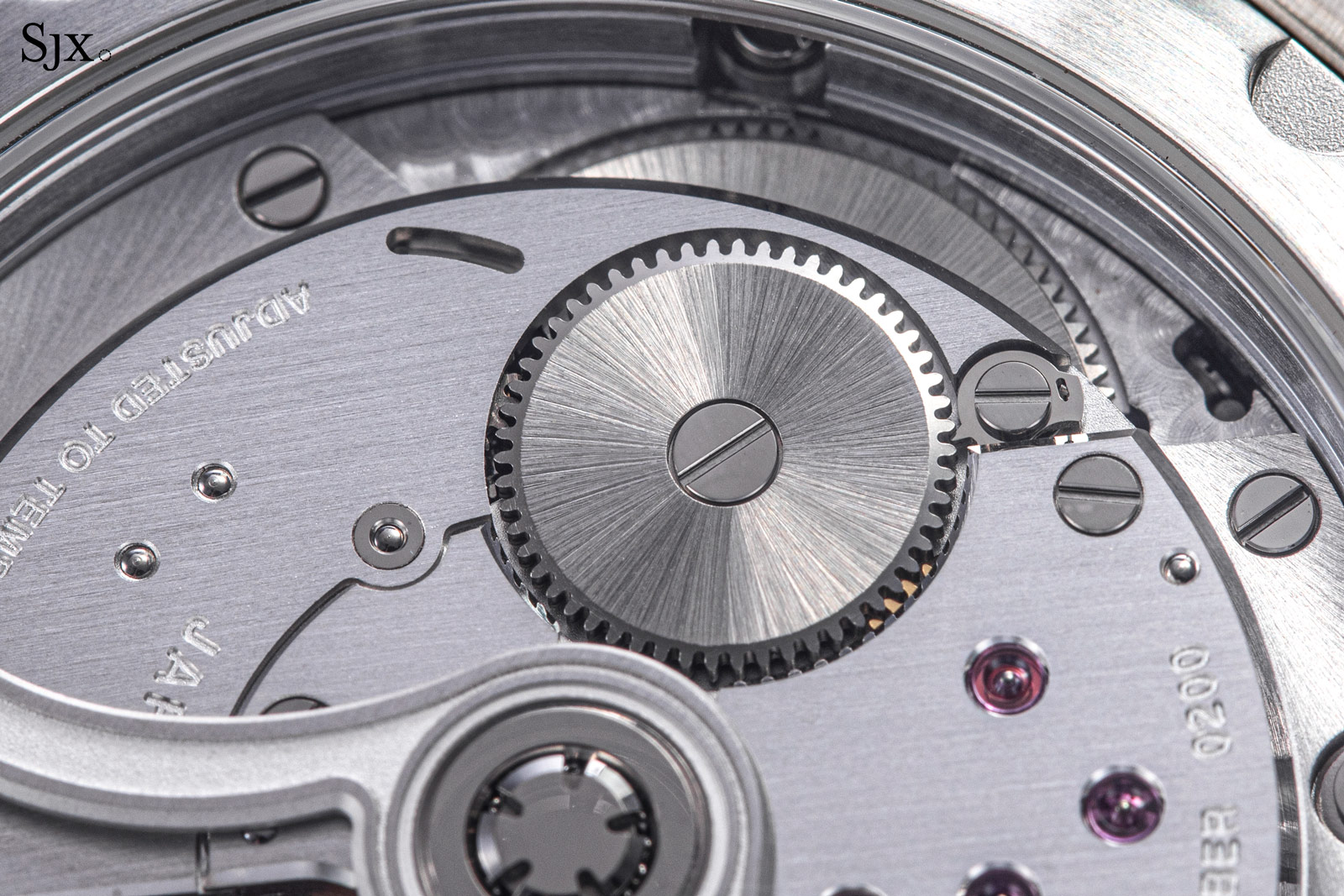
The barrel ratchet wheel, with the large barrel visible below
And the largish balance wheel is secured with a comparatively small cock, leaving the remaining space next to the barrel for the automatic winding mechanism. The winding mechanism of the cal. 0200 is tried and tested, relying on a single reverser wheel adapted from the Miyota 82 series movement, a robust calibre produced in immense volumes, making efficient performance a certainty.
Citizen has always used unidirectional winding in its automatic movements, a concise, efficient set up that demands minimum space as it requires only one reverser wheel, compared to the two wheels of most bidirectional winding mechanisms (excepting the pawl-driven mechanisms like Seiko’s Magic Lever or IWC’s Pellaton).
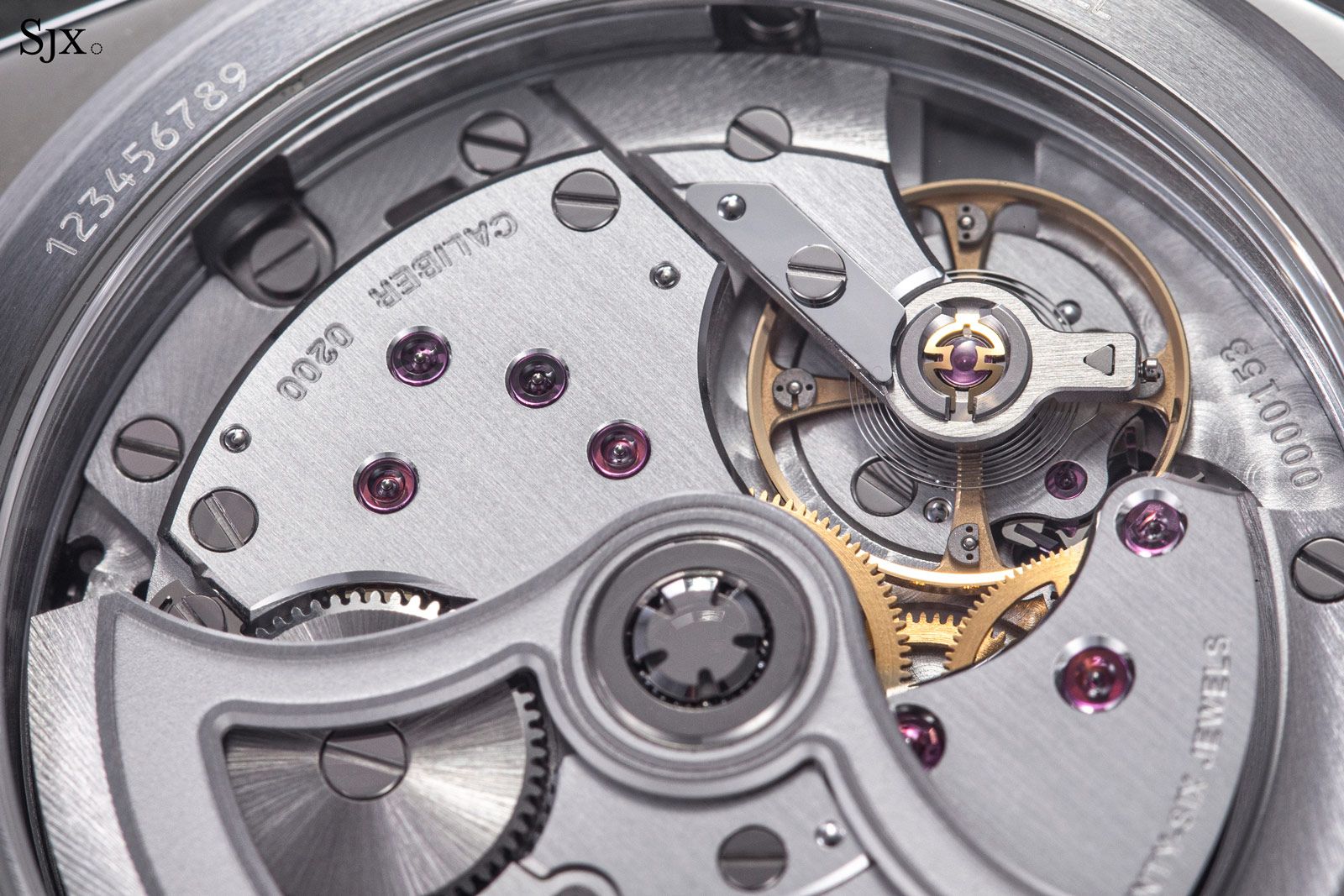
The unidirectional winding mechanism is located to the left of the balance, sitting on the same plane as the going train
The details
Including the rotor, the movement is surprisingly tall at 5.0mm high, due in part to its robust construction. The height puts it in the ballpark of the workhorse Rolex movements, cals. 3125 and 3235, which are in the 6 mm range. By comparison, the ETA 2892 is 3.6 mm high.
That said, the Calibre 0200 watch itself is fairly thin at 10.9 mm high, with a case design that gives it a slimmer profile on the wrist. It’s thinner than the Rolex Datejust 41, for instance, which is a hair under 12 mm.
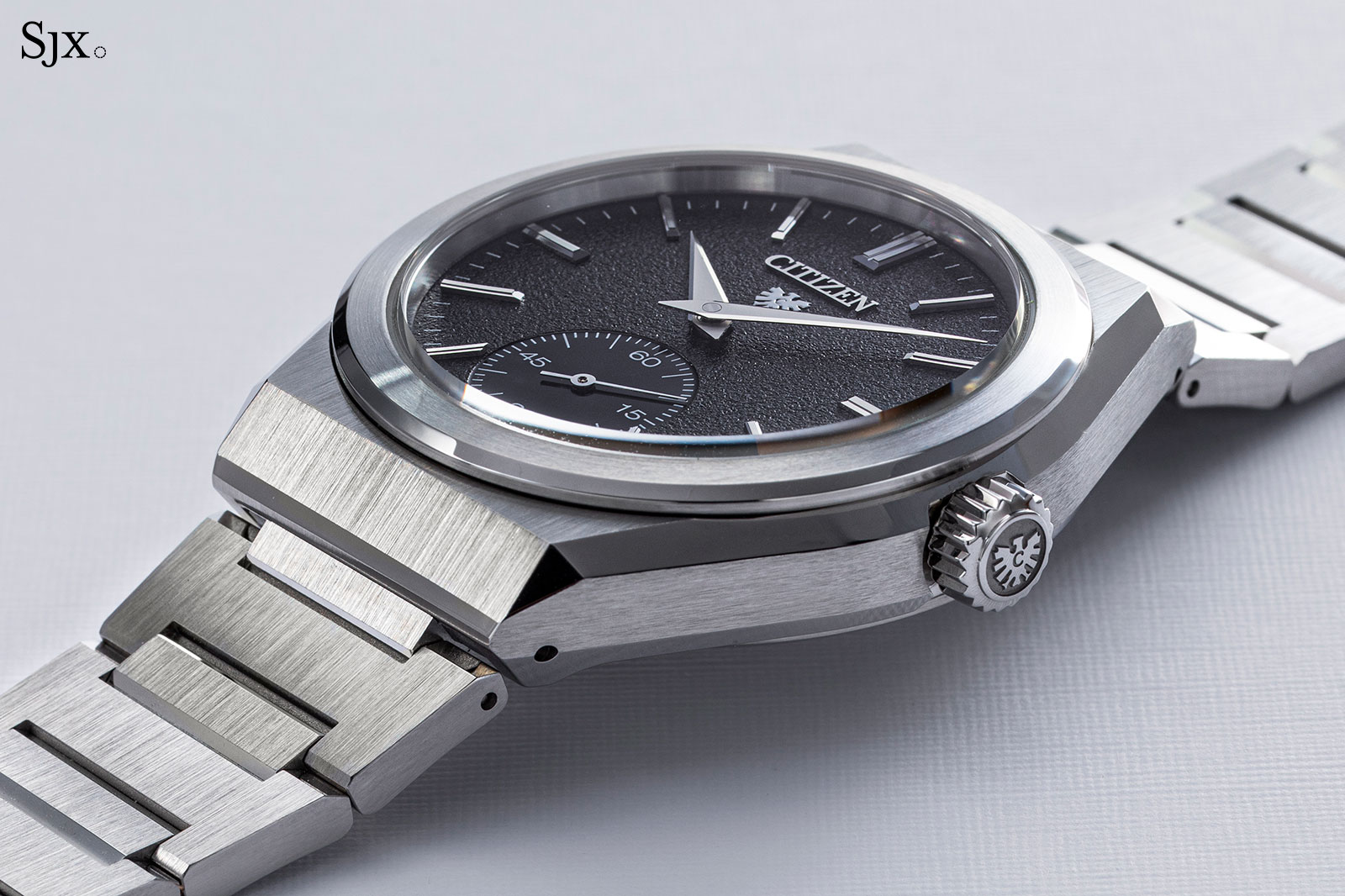
Notably, the movement can be converted into a slimmer, manual-wind calibre by removing the rotor and winding mechanism – Mr Tsuchiya said it is possible but there are no plans to do so for now – which would easily shave off a millimetre off its height.
More intriguingly, Mr Tsuchiya agreed that the cal. 0200 does have the technical potential to carry additional complications, though he did caution there are no immediate plans to do so. Stock images of the cal. 0200 base plate reveal it is a thick plate, which indicates additional complications could be incorporated under the dial without increasing its overall height significantly.
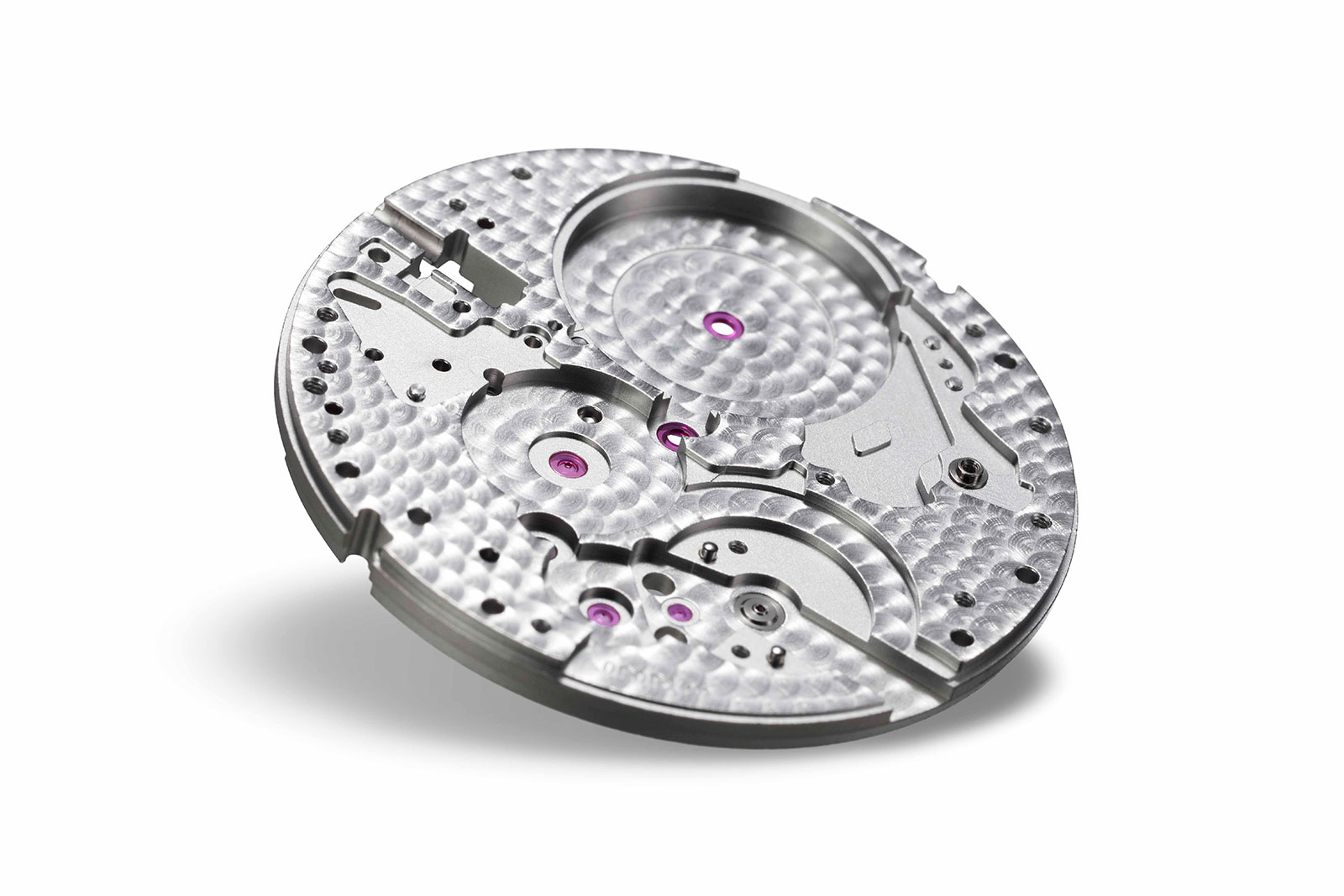
The cal. 0200 base plate. Photo – Citizen
As with most modern high-end movements, the balance wheel of the cal. 0200 is free sprung, instead of using a traditional regulator with two pins. A free-sprung balance offers better isochronism, maintaining its accuracy regardless of how much or little the balance wheel swings, while its factory regulation is also more resistant to shocks.
The balance was developed in-house by Citizen, and has four regulating weights on its rim – specifically, two pairs of two types of weights for different levels of regulation. Beyond its construction, the balance is impressive in its assembly and regulation. Each balance wheel is matched with a specific hairspring during assembly – done by a combination of electronic and manual evaluation – so each set of hairsprings and balance wheels have a unique pinning point. Typically found only on far pricier watches, this matching of balance wheel and hairspring is a “milestone” for Citizen, according to Mr Tsuchiya.
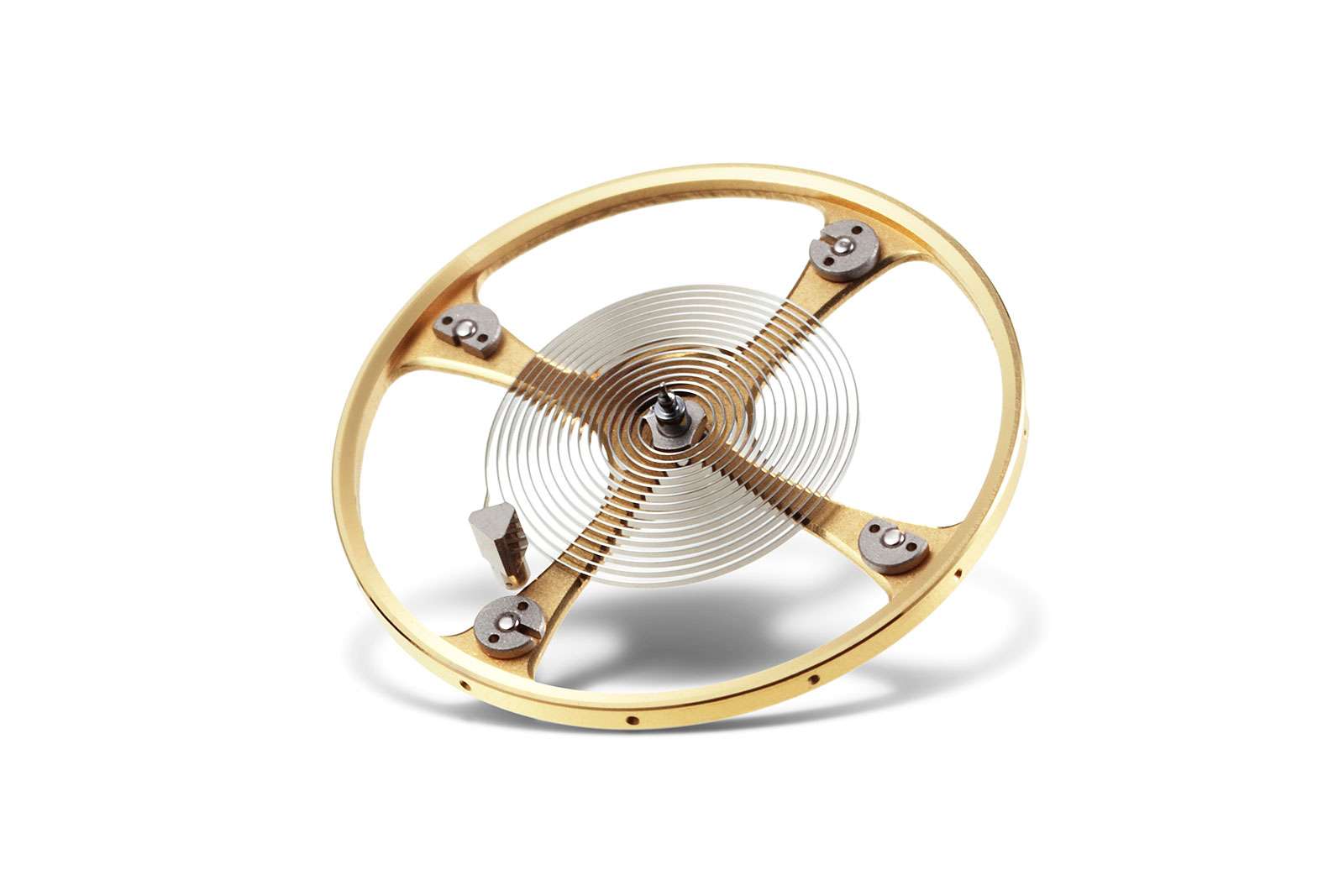
The free-sprung balance with two pairs of interia weights. The semicircle-shaped weights are for rough regulation, while the full circular weights finetunes the regulation. Photo – Citizen
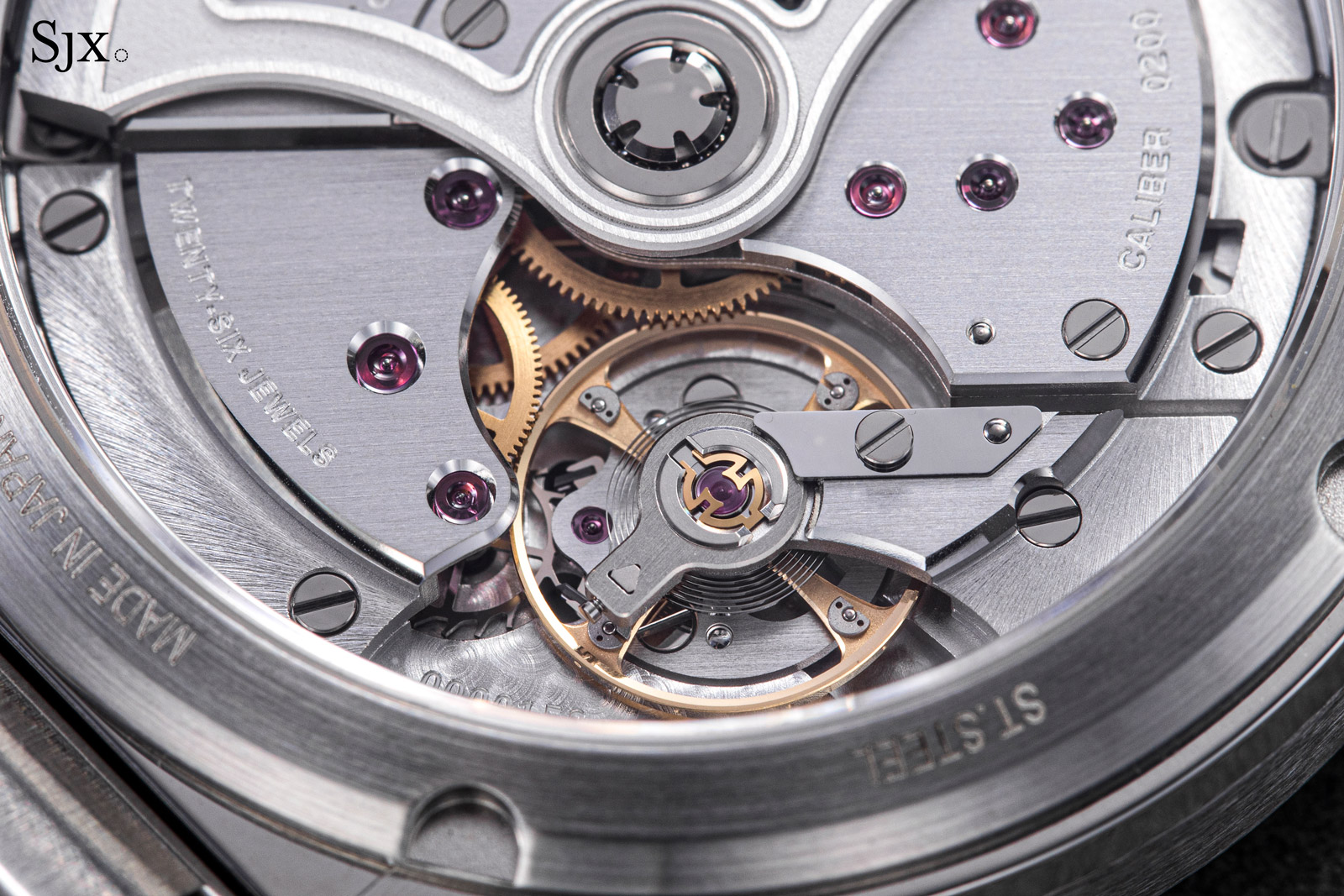
The free-sprung balance, with four inertial weights for regulation
Also noteworthy is the escapement – the escape wheel and pallet fork – which are fabricated in a nickel alloy via a lithography process similar to LIGA. Essentially growing tiny, planar components via electroplating in a micro mould, the technique results in superior precision and tolerances, as well as finer control of the shape of the components, a vital advantage when it comes to fabricating the most delicate components in the gear train.
Though LIGA is well known in Swiss watchmaking, these components are made in Japan. Both the escape wheel and pallet fork resemble conventional, solid components, instead of being skeletonised as all Swiss-made LIGA escapement parts are. According to Mr Tsuchiya, this was done for purely aesthetic reasons as the development team desired the traditional look of solid escapement parts.
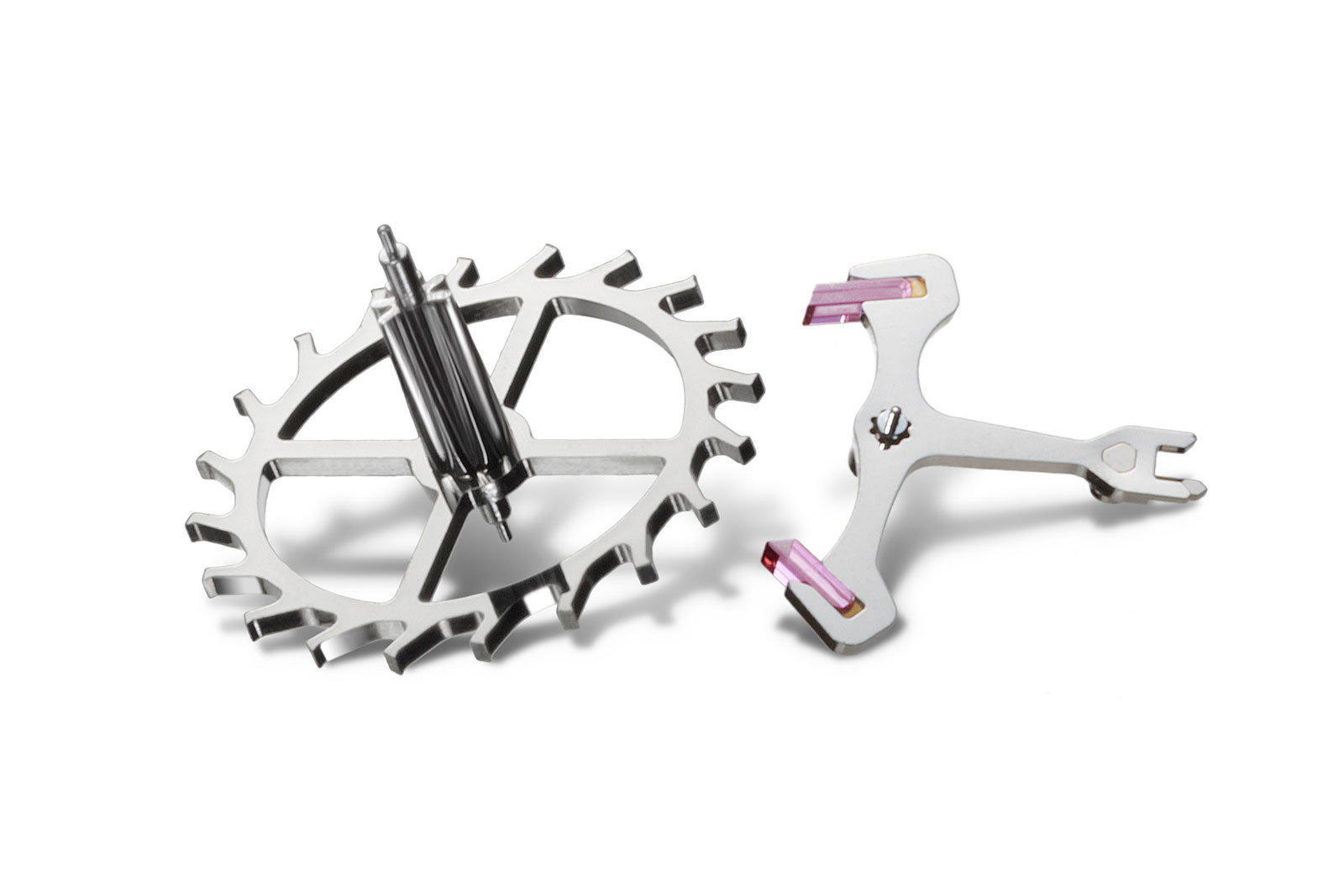
The escape wheel and pallet lever, both made via LIGA. Photo – Citizen
The movement beats at a typical 4 Hz, or 28,800 beats per hour, the norm in modern watchmaking. Since the dial of the Caliber 0200 watch has a subsidiary seconds instead of a central seconds hand, a higher beat for smoother seconds hand motion isn’t necessary, so 4 Hz was no doubt a purely technical choice for chronometric performance.
An optimal number that’s a good tradeoff between high and low frequency, 4 Hz is high enough that it remains stable in the face of shocks on the wrist, but low enough to avoid to unnecessary wear and tear along with a reduction of the power reserve.
The cal. 0200 has a power reserve of 60 hours – good enough, but a longer reserve of 70 hours, or three days, would have been stellar.
Finishing
While the movement is intrinsically Japanese, its finishing was aided by La Joux-Perret, the Swiss movement maker best known for its chronographs that Citizen acquired in 2012. Citizen is clearly proud of the aesthetics of the cal. 0200; it’s clearly visible through the sapphire back, in contrast to rivals that prefer a solid back on comparable watches. And for good reason – the cal. 0200 finishing is exceptional in its price segment.
As with most sports watches, the movement is presented in suitably restrained manner: a monochromatic, rhodium-plated finish, with a little colour from the jewels, gears, and balance wheel. It’s a handsome, contemporary aesthetic that’s characterised by bridges that are predominantly straight grained instead of being decorated with Cotes de Geneve.
Though seemingly elementary, the brushed finish on the bridges is hard to do as well as it is done here. The brushed finish results in a uniformly neat finish, meeting the sharp, diamond-cut bevelling at a perfectly defined edge. And despite being done by machine, the grain of the brushing is fine and lustrous, giving the bridges the sheen of a far more expensive movement.
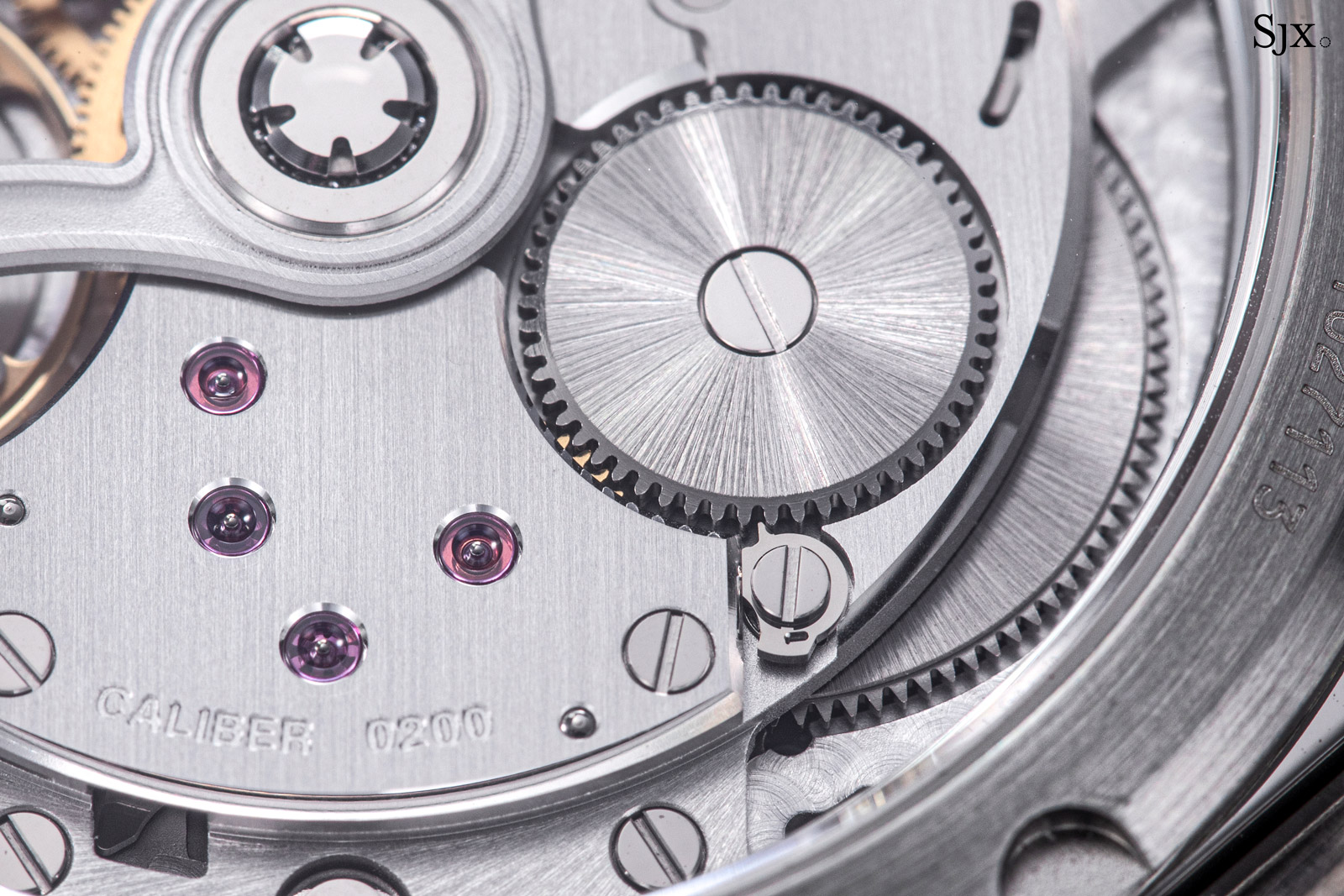
The prominent, diamond-cut bevelling of the bridges brings to mind the movements of H. Moser & Cie., though it is now increasingly found in more affordable watches, including the various Grand Seiko Spring Drive calibres, Panerai’s in-house movements, and the recent cal. 3861 in the Omega Speedmaster Moonwatch.
But Citizen takes the finishing to a higher, impressive level. The icing on the cake are deep, polished countersinks for the jewel bearings that complements the bridge bevels – an additional effort which is also made possible thanks to the relatively thick bridges. This is a detail often overlooked by other brands, which leads to jarring countersinks with rough surfaces that stand out in stark contrast against the cleanly finished outer bevels and surface finishing of the bridges.
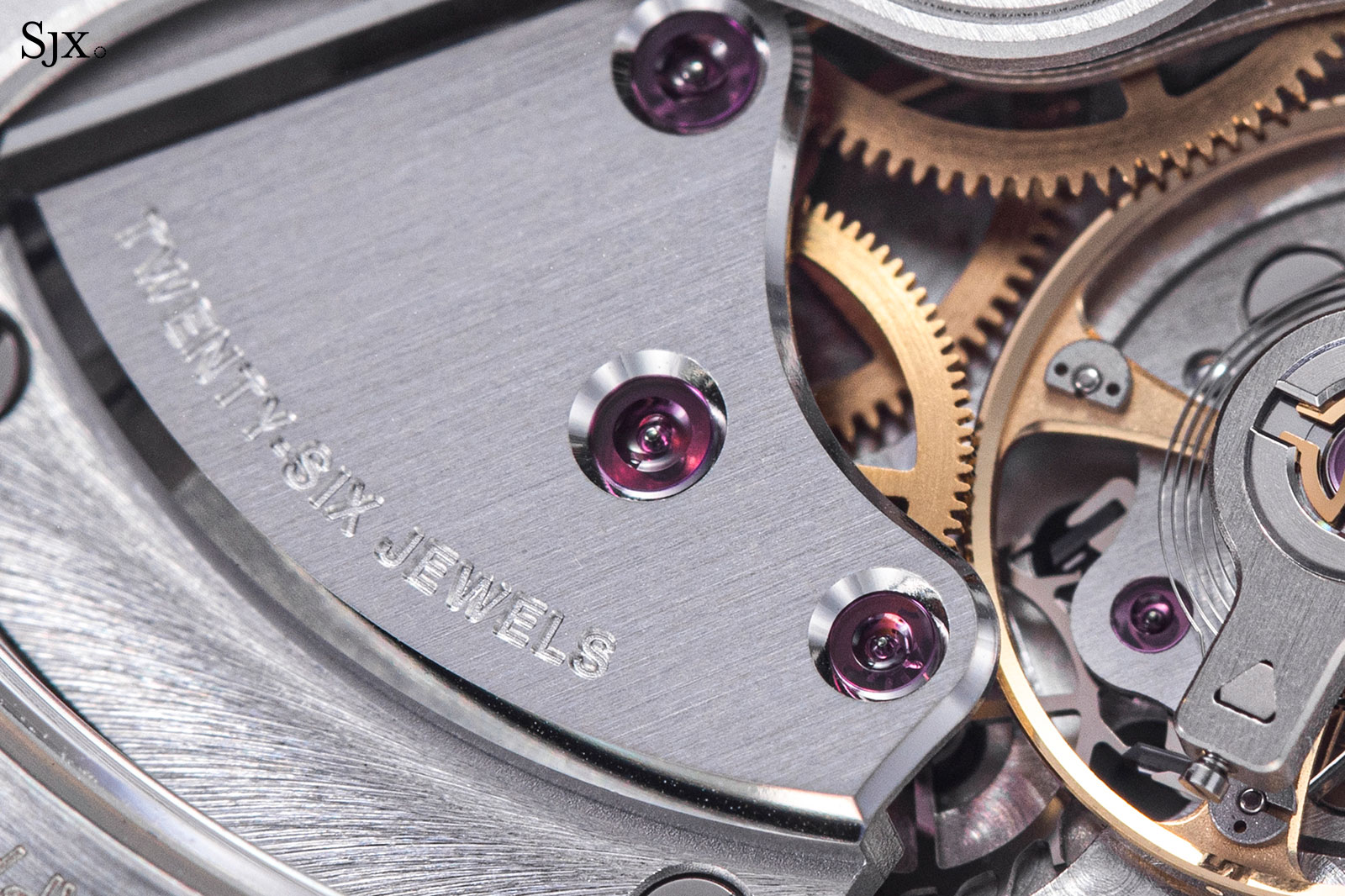
The polished jewel countersinks that reflect light from different angles, highlighting the large jewel bearings used in the movement
Another finer detail worth savouring are the size of the jewel bearings. Larger than normal, the jewels were most likely sized as such for aesthetics; they provide a good colour contrast against the silvery bridges, while also making the polished countersinks more prominent.
The movement’s appearance could be further enhanced with even wider countersinks that match the width of the bridge bevelling, though that really is nitpicking. Similarly, the screws sit in shallower countersinks, but are themselves impressively finished, with bevelled slots and rims, as well as mirror polished tops.
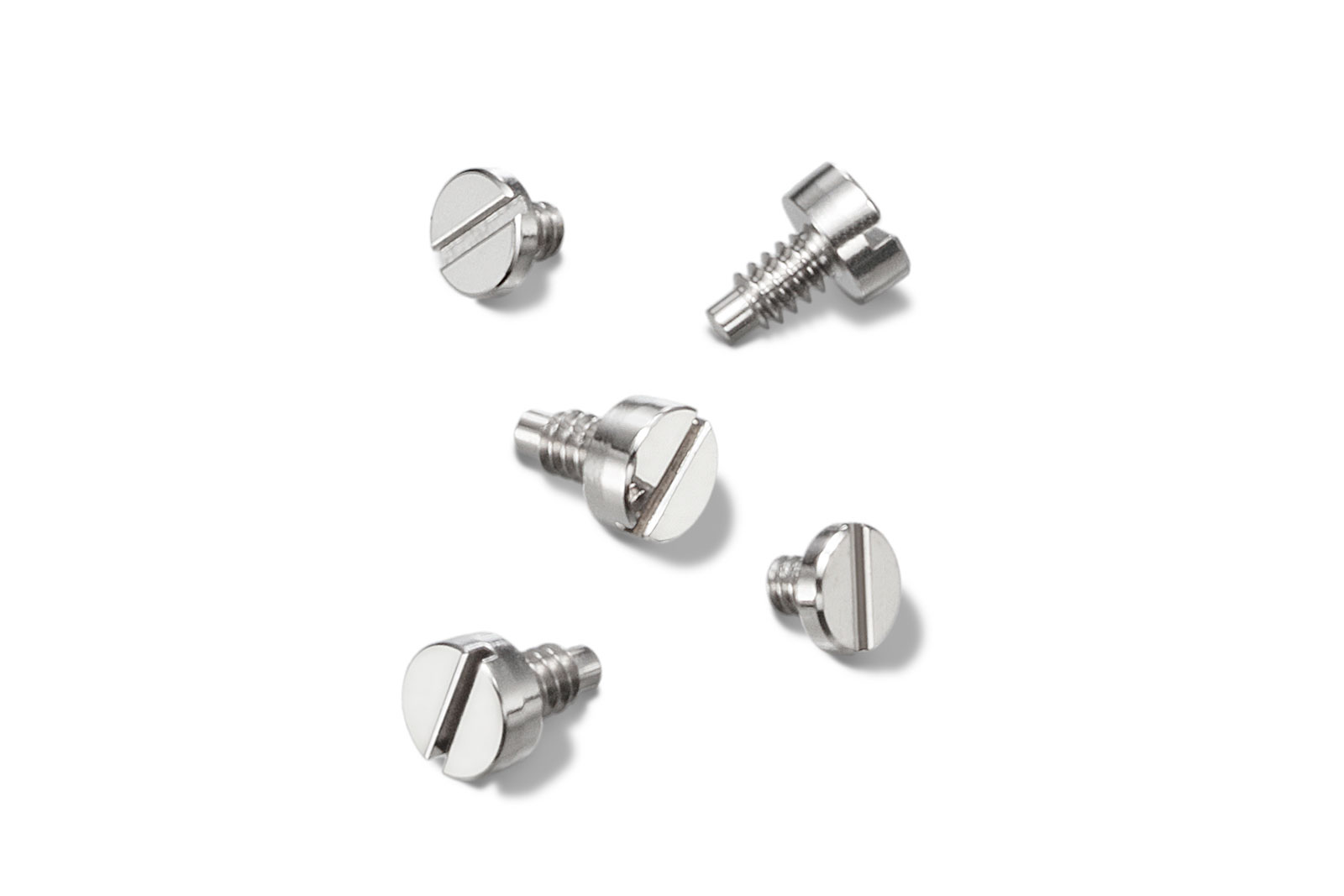
A selection of screws used in the cal. 0200, all having chamfered slots and edges, as well as mirror polished heads. Photo – Citizen
On a related note, one subtle detail to be appreciated are the steady pins, also known as locating pins, which help to precisely position the bridges on the main plate. The tips of a few steady pins are visible on the bridges, revealing domed ends that are highly polished – a level of refinement reminiscent of higher-end watchmaking.
All of the markings on the bridges are machined in a wide and clean manner with no visible burrs, though they blend into the bridges at a distance. While the tone-on-tone finish is no doubt intentional, a gilded finish for the lettering would have created greater contrast, while also highlighting the neat engraving.
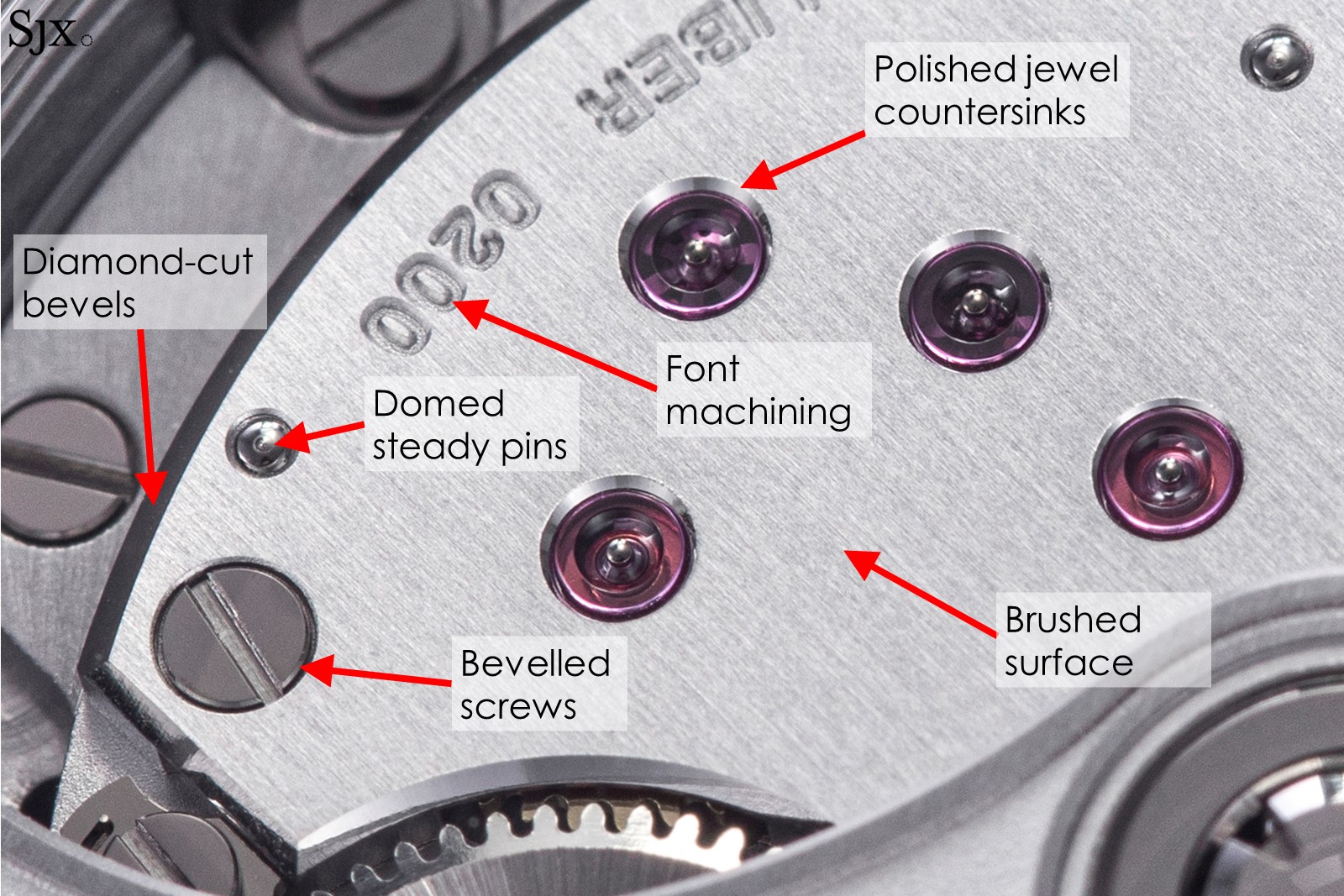
The various finishing methods applied to the Cal 0200
Despite the excellent finish overall, there are a handful of components that can be done better, though that is paradoxically a consequence of how well everything else is decorated.
For instance, the raised borders of the rotor have rounded corners are incongruous against the sharply defined bevels of the bridges underneath. The relief lettering on the rotor is stamped, so it is not as well defined as the text on the bridges.
That said, the rotor is an alloy similar to tungsten, which makes it twice as hard as brass, which implies that a similar level of finishing would be impractical. The most obvious alternative would be a gold or platinum rotor, which is asking too much considering what the Caliber 0200 costs.
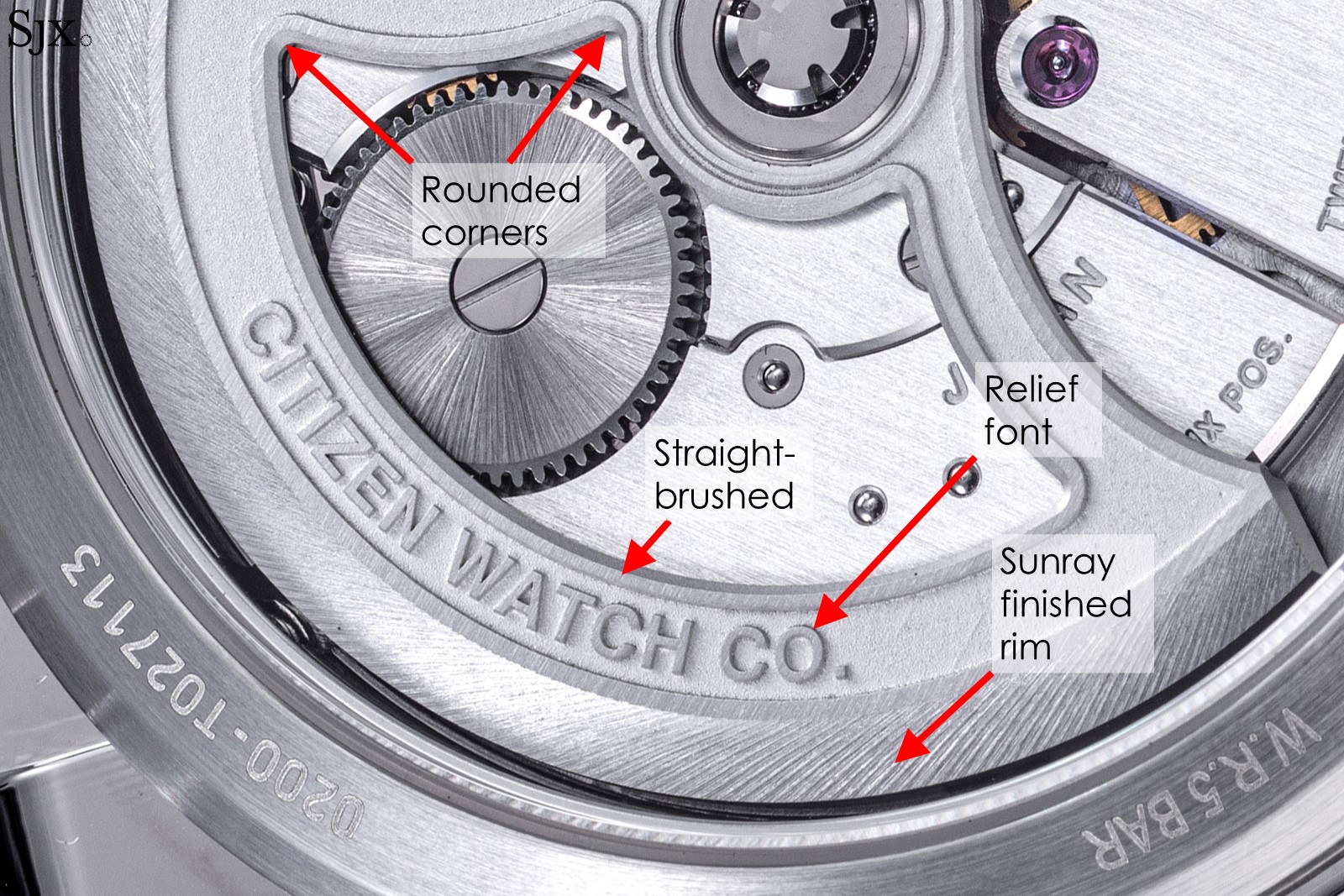
The rotor is stamped and its top surface being straight-grained while the outer rim has a sun-ray finish
Also, the barrel’s ratchet wheel has a workmanlike, industrial finish similar to that of other mainstream movements. It’s finished with radial brushing that has a pronounced grain, while its teeth have no clear finish. The finish of the ratchet wheel contrasts starkly against the finishing of the barrel bridge. In fact, the mirror-finished bevels of the bridge are so perfectly done they reflect the teeth of the ratchet wheel with no distortion.
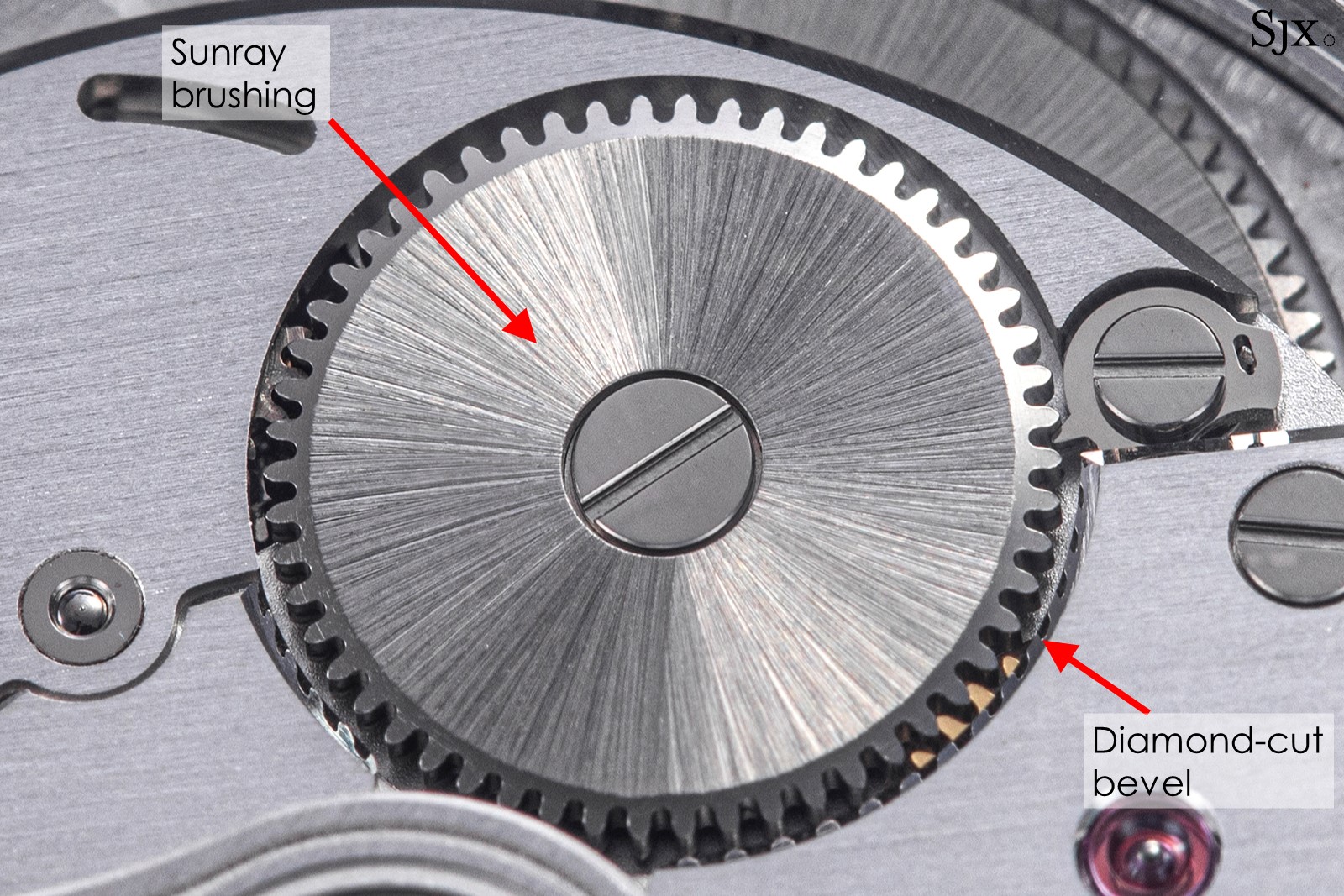
The ratchet wheel is industrially finished, but admire the reflection of its teeth against the bevelling of the bridge
The steel plate for the hairspring stud holder also appears plain against the rest of the movement. Its form does not integrate with the rest of the movement, and it has a simple, flat polished finish. While functional, a more elegant design would have elevated the consistency of the movement’s aesthetic.
Nevertheless, these are overcritical observations which felt necessary, as the Cal 0200 is otherwise a masterclass of a well-executed movement, with a no-nonsense geartrain and exemplary finishing for its price point.
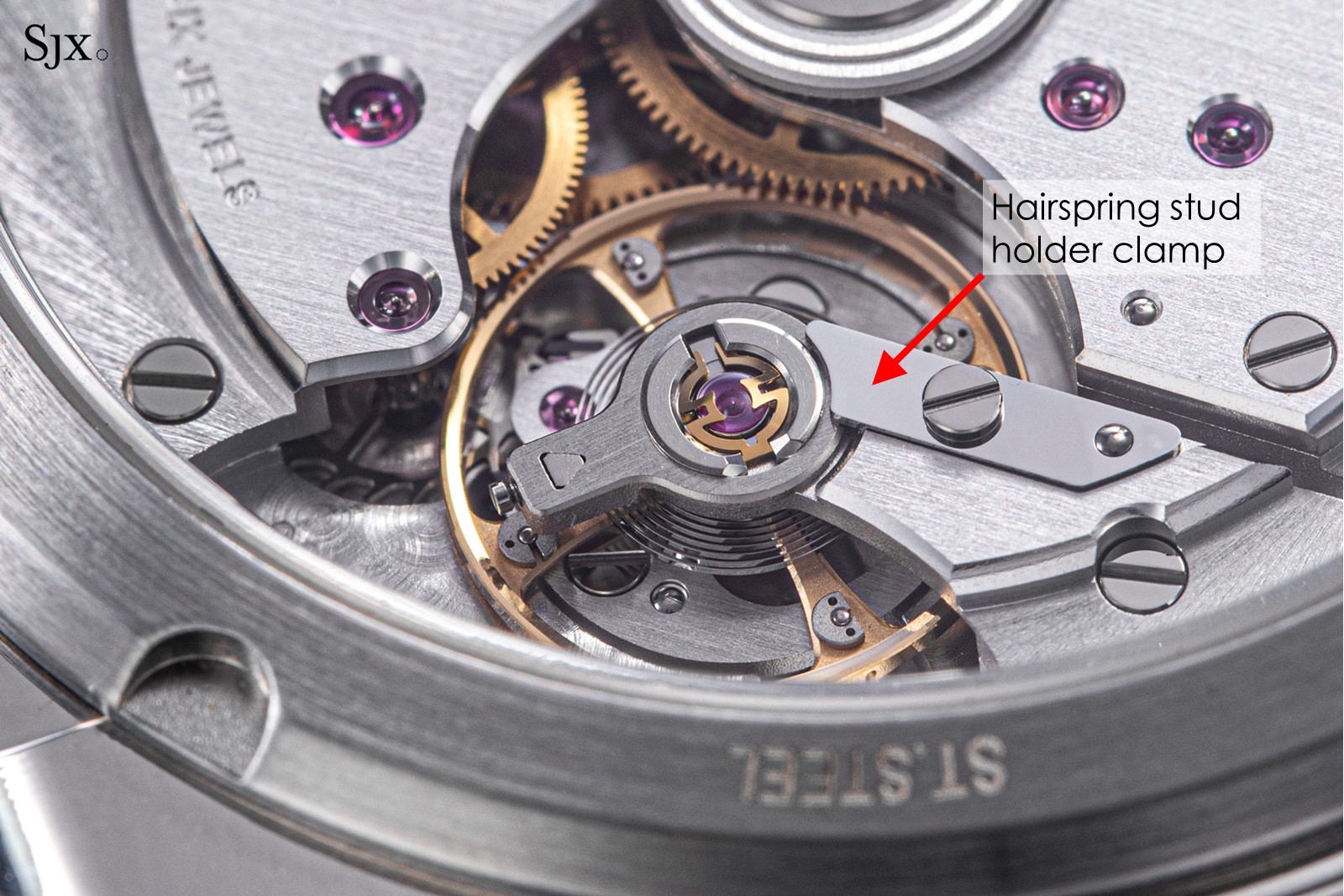
The steel clamp for the hairspring stud holder
Concluding thoughts
There is a lot to like about the Caliber 0200 wristwatch and the cal. 0200 movement, because they both have been carefully executed to a very, very high standard in both construction and finish.
Citizen does strong competition in this price segment, including with fellow Japanese brand, Grand Seiko. While its rival does enjoy a better-established international profile, Citizen now has the Caliber 0200, which is a truly exceptional product, especially for US$6,000.
It is still too early to tell if the Caliber 0200 will be a commercial success, but it will no doubt be a hit with serious-minded watch enthusiasts who appreciate its details and quality, which are already obvious in the prototype, and will surely be refined in the production watches.
Back to top.